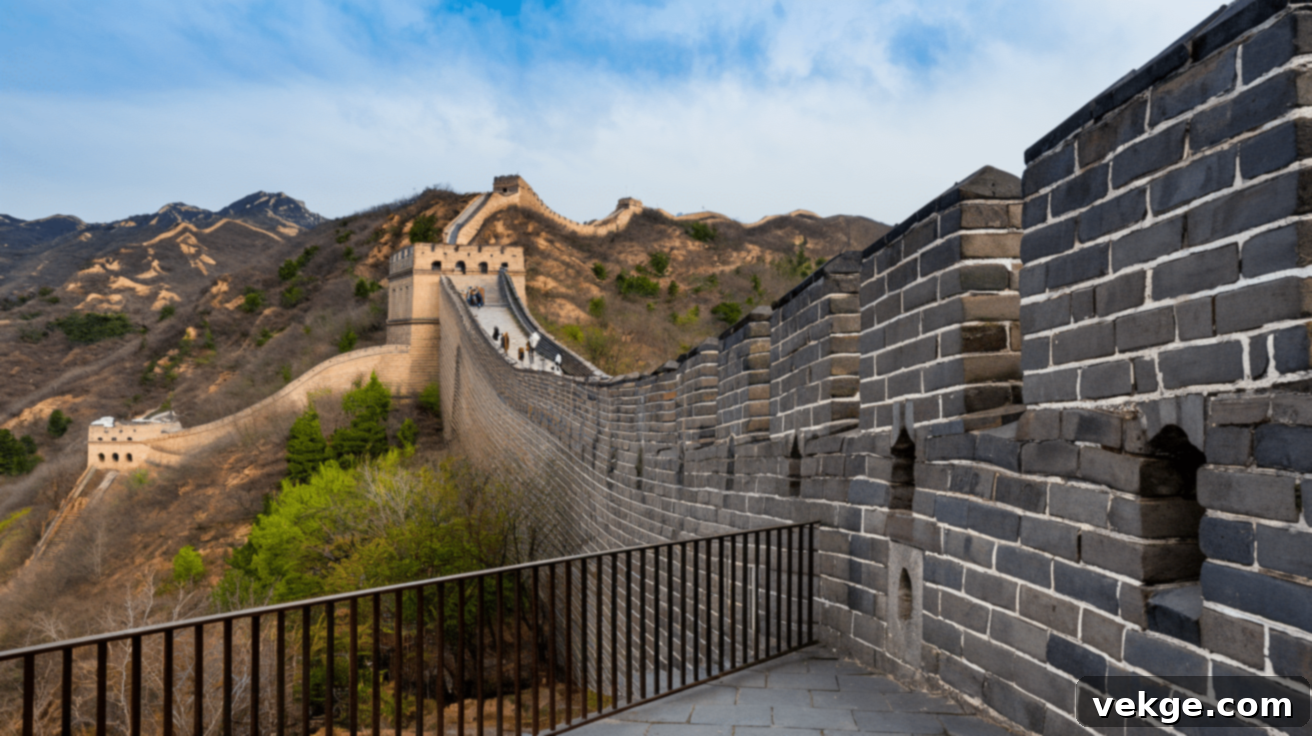Discover China’s Architectural Wonders: A Journey Through Ancient Dynasties to Modern Skylines
China’s architectural landscape tells an extraordinary story, spanning millennia of innovation, culture, and human ambition. From the ancient stone palaces that echo the whispers of imperial dynasties to the shimmering glass towers that pierce the clouds of modern megacities, the country’s buildings are powerful testaments to its rich history and bold aspirations.
Imagine wandering through magnificent spaces where the past gracefully intertwines with the present. This article invites you on an immersive journey to explore the most amazing landmarks that showcase China’s profound cultural narrative—from revered temples and monumental ancient fortifications to breathtaking modern city centers that captivate visitors from across the globe.
Prepare to delve into the incredible structures that make China’s architectural heritage truly unique and unforgettable, offering a comprehensive glimpse into its diverse and dynamic building traditions.
Why China’s Architecture Stands Out Globally
China’s architectural legacy extends far beyond mere construction; it is a vibrant, living timeline that chronicles the lives, beliefs, and societal evolution of its people over thousands of years. Chinese master builders have consistently created structures that are more than just places to live or work; they are cultural statements, spiritual havens, and engineering marvels.
A Rich Tapestry of Creativity and Heritage
Several distinctive elements contribute to the unparalleled allure of Chinese architecture:
- History Etched in Stone: Each architectural masterpiece serves as a storyteller, narrating tales of the dynasties, artisans, and communities who meticulously crafted them. They are tangible links to historical events and the everyday lives of past generations.
- Deep Cultural Roots: Designs are intricately woven with ancient traditions, philosophical tenets, and spiritual beliefs, reflecting the profound influence of Confucianism, Taoism, and Buddhism on spatial organization and aesthetic principles.
- Innovation Meets Timeless Tradition: Modern Chinese architecture often masterfully blends cutting-edge design and sustainable technology with reverence for classical Chinese aesthetic principles, creating a harmonious dialogue between past and future.
More Than Just Physical Structures
Consider Chinese architecture as a fascinating time capsule. Revered ancient temples stand in serene contrast beside gleaming glass skyscrapers, while majestic imperial palaces neighbor bustling modern urban hubs. This juxtaposition vividly illustrates China’s remarkable transformation—from powerful imperial kingdoms to a global leader in technology and innovation.
The true enchantment lies in the intricate details. Traditional builders meticulously selected specific colors, embraced symbolic shapes, and carefully considered how each structure would harmonize with its natural surroundings. Contemporary architects, too, focus on more than just aesthetics; they strive to create spaces that resonate deeply with people, fostering meaning and connection.
Ancient and Historical Architectural Masterpieces
China’s vast landscape is adorned with an array of incredible historical structures that are enduring symbols of human courage, resilience, and unparalleled creativity. Let’s embark on a journey through some of the most significant ancient buildings that embody the very essence of China’s rich historical narrative.
1. The Great Wall of China (Multiple Provinces)

This monumental defensive barrier, stretching over vast mountain ranges and treacherous valleys, stands as one of humanity’s most astonishing achievements. Conceived and constructed over centuries to protect ancient Chinese kingdoms from invading nomadic tribes, the Great Wall is an awe-inspiring testament to human determination and large-scale engineering.
Key highlights:
- Spans an incredible length of over 13,000 miles (21,000 kilometers), making it the longest man-made structure in the world.
- Construction involved multiple dynasties and took more than 2,000 years to complete, evolving through various forms and materials.
- Often cited as visible from space, though this is largely a myth, its sheer scale on Earth is undeniable.
- Served as a crucial strategic defense, protecting China from northern incursions and facilitating trade along the Silk Road.
2. Forbidden City (Beijing)
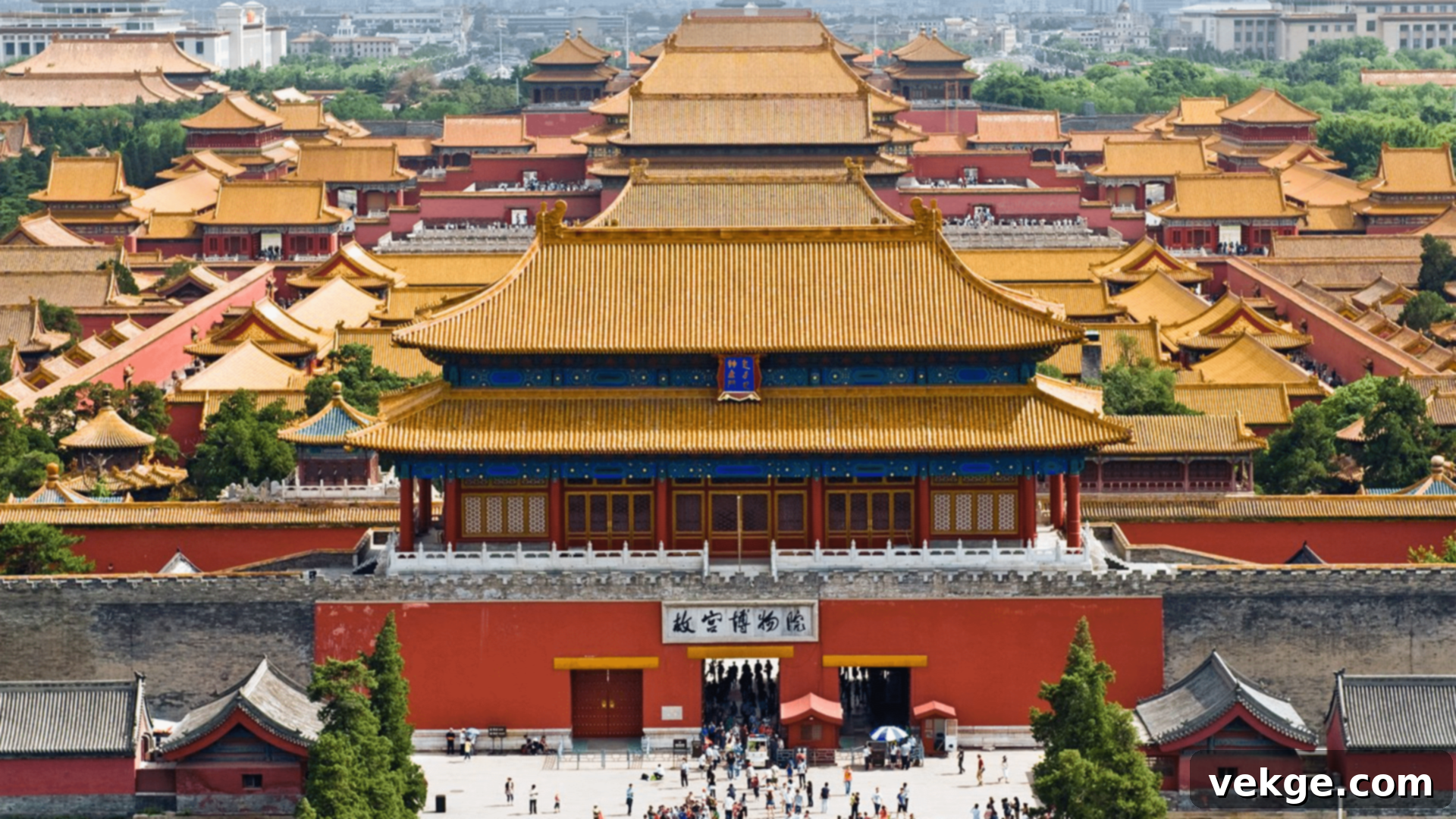
Nestled in the very heart of Beijing, the Forbidden City was the opulent imperial palace for Chinese emperors for nearly 500 years, serving as the political and ceremonial center of China. This immense palace complex is an unparalleled example of traditional Chinese palatial architecture, designed to impress and project absolute power.
Key highlights:
- Comprises an astounding 980 buildings, covering a vast area of 180 acres (72 hectares).
- Its construction began in the early 15th century during the Ming Dynasty, with subsequent renovations and expansions by the Qing Dynasty.
- Symbolizes unparalleled royal power and meticulous adherence to traditional Chinese cosmic and architectural principles.
- A UNESCO World Heritage Site and home to the Palace Museum, housing an extensive collection of imperial artifacts.
3. Temple of Heaven (Beijing)
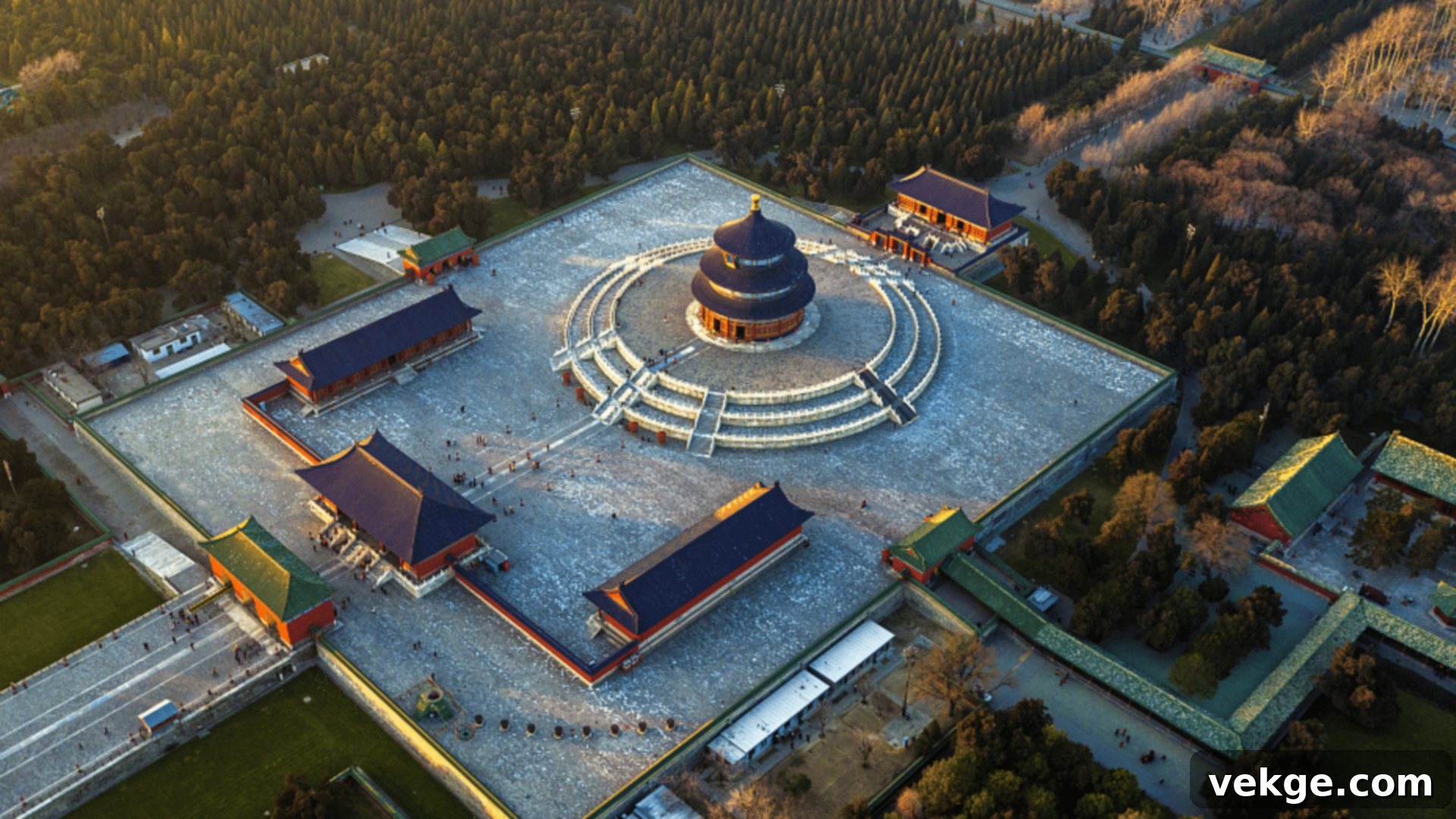
The Temple of Heaven is a magnificent complex where emperors, as the Sons of Heaven, performed annual prayer ceremonies for good harvests. In Chinese cosmology, its design perfectly embodies the sacred connection and harmonious balance between earth and heaven.
Key highlights:
- Specifically designed for annual prayer ceremonies to Heaven for bountiful harvests and national prosperity.
- Features a perfect circular design for its main halls, contrasting with square bases, representing heaven (round) and earth (square).
- Symbolizes the profound harmony between human endeavor and natural forces, reflecting deep spiritual and philosophical beliefs.
- Its intricate woodwork, vibrant colors, and symbolic layouts offer insights into ancient Chinese religious practices.
4. Potala Palace (Lhasa, Tibet)
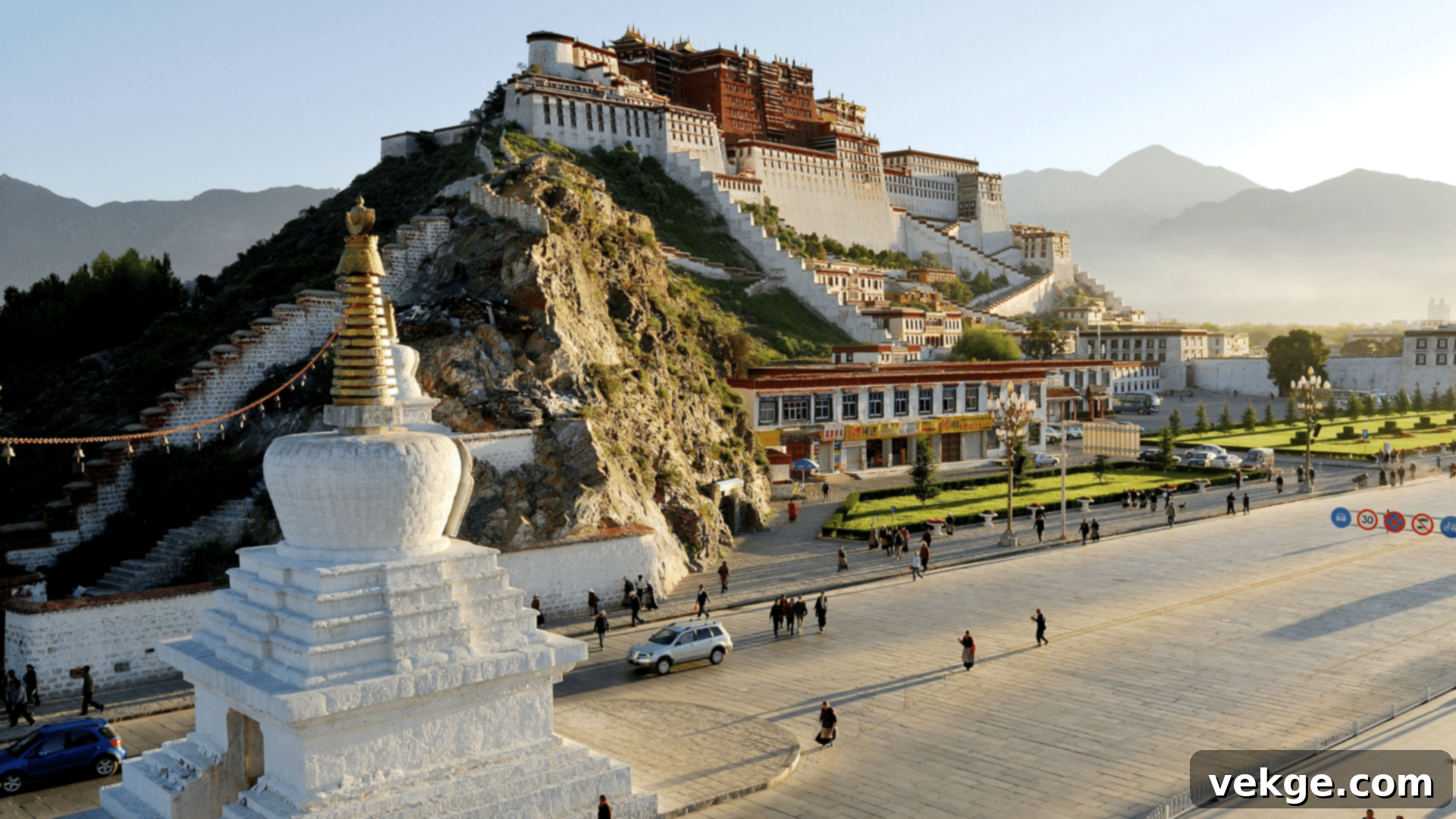
Perched majestically atop Marpo Ri (“Red Hill”) in Lhasa, Tibet, the Potala Palace appears as if plucked from a fairy tale. For centuries, this breathtaking fortress-like palace served as the winter residence of the Dalai Lamas, embodying both religious and political authority.
Key highlights:
- Rises an impressive 12,000 feet (3,700 meters) above sea level, making it one of the highest palaces in the world.
- A massive stone structure characterized by its striking white and red sections, symbolizing administrative and religious functions.
- Served as the central hub of Tibetan Buddhism, combining roles as a monastery, palace, and spiritual teaching center.
- Its distinctive architectural style reflects unique Tibetan building traditions, designed to withstand the harsh mountain environment.
5. Summer Palace (Beijing)

More than merely a palace, the Summer Palace is an expansive and exquisite garden complex that served as a serene retreat for imperial families seeking respite from the bustling life of the Forbidden City. Its picturesque landscapes, intricate pavilions, and tranquil waterways create an idyllic escape.
Key highlights:
- Covers an extensive area of 2.9 square kilometers (720 acres), with a significant portion dedicated to Kunming Lake.
- Features a massive man-made lake, rolling hills, and a harmonious collection of temples, bridges, and traditional gardens.
- A masterpiece of Chinese landscape garden design, showcasing the sophisticated artistic skills of imperial architects.
- A UNESCO World Heritage Site, celebrated for its aesthetic beauty and historical significance.
6. Shaolin Temple (Henan)
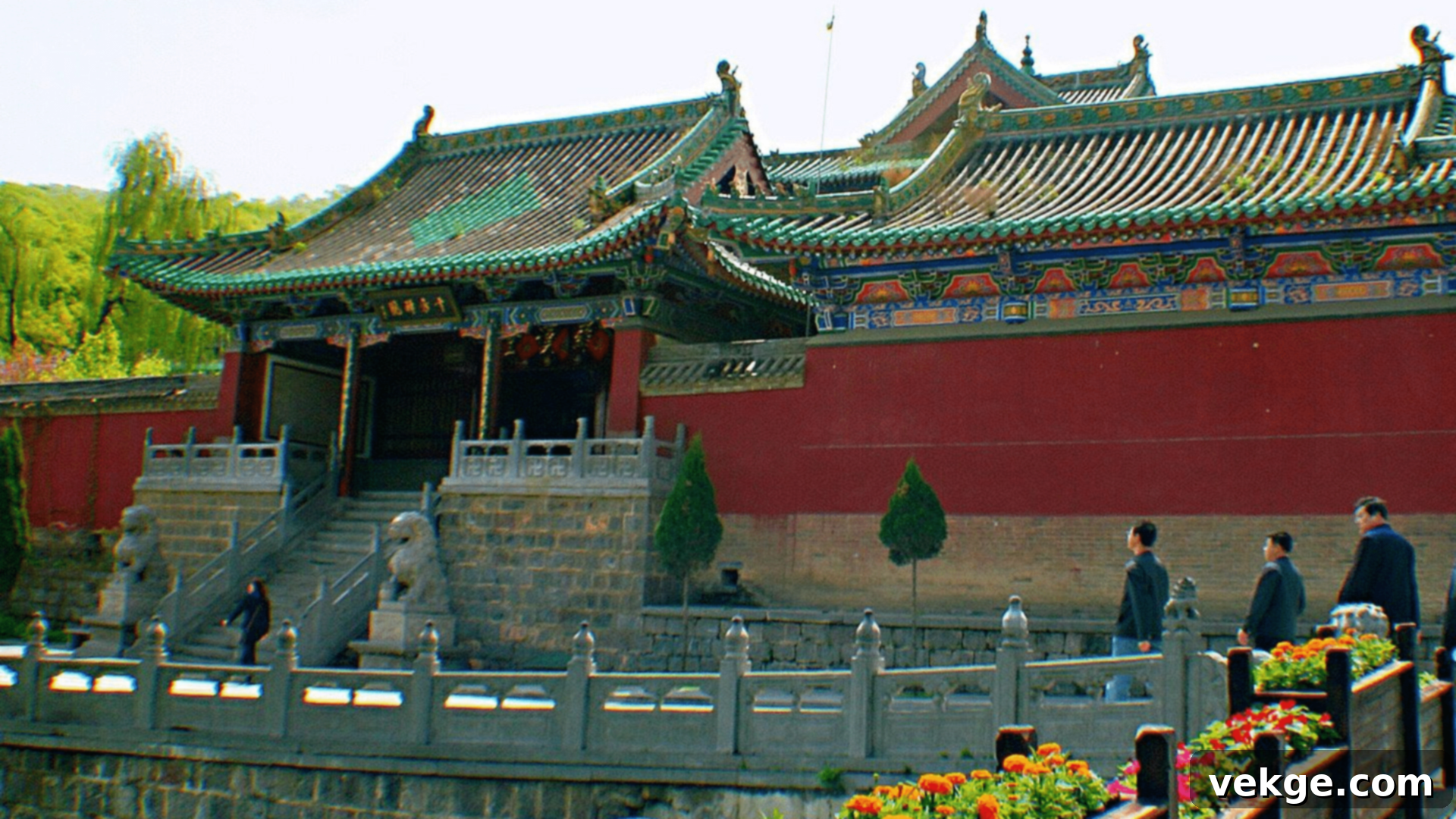
Globally renowned as the birthplace of Zen Buddhism and Kung Fu, the Shaolin Temple is far more than just a religious site. It stands as a pivotal center of Chinese cultural history, deeply intertwined with martial arts traditions and spiritual development.
Key highlights:
- Celebrated worldwide as the legendary birthplace of Kung Fu, a unique fusion of Chan Buddhism and martial arts.
- Boasts a history spanning over 1,500 years, making it one of China’s oldest and most influential Buddhist temples.
- Nestled in the scenic Songshan Mountains, offering a tranquil yet inspiring setting for spiritual and physical training.
- Continues to combine intense spiritual practice with rigorous physical discipline, maintaining its ancient traditions.
7. Hanging Monastery (Shanxi)
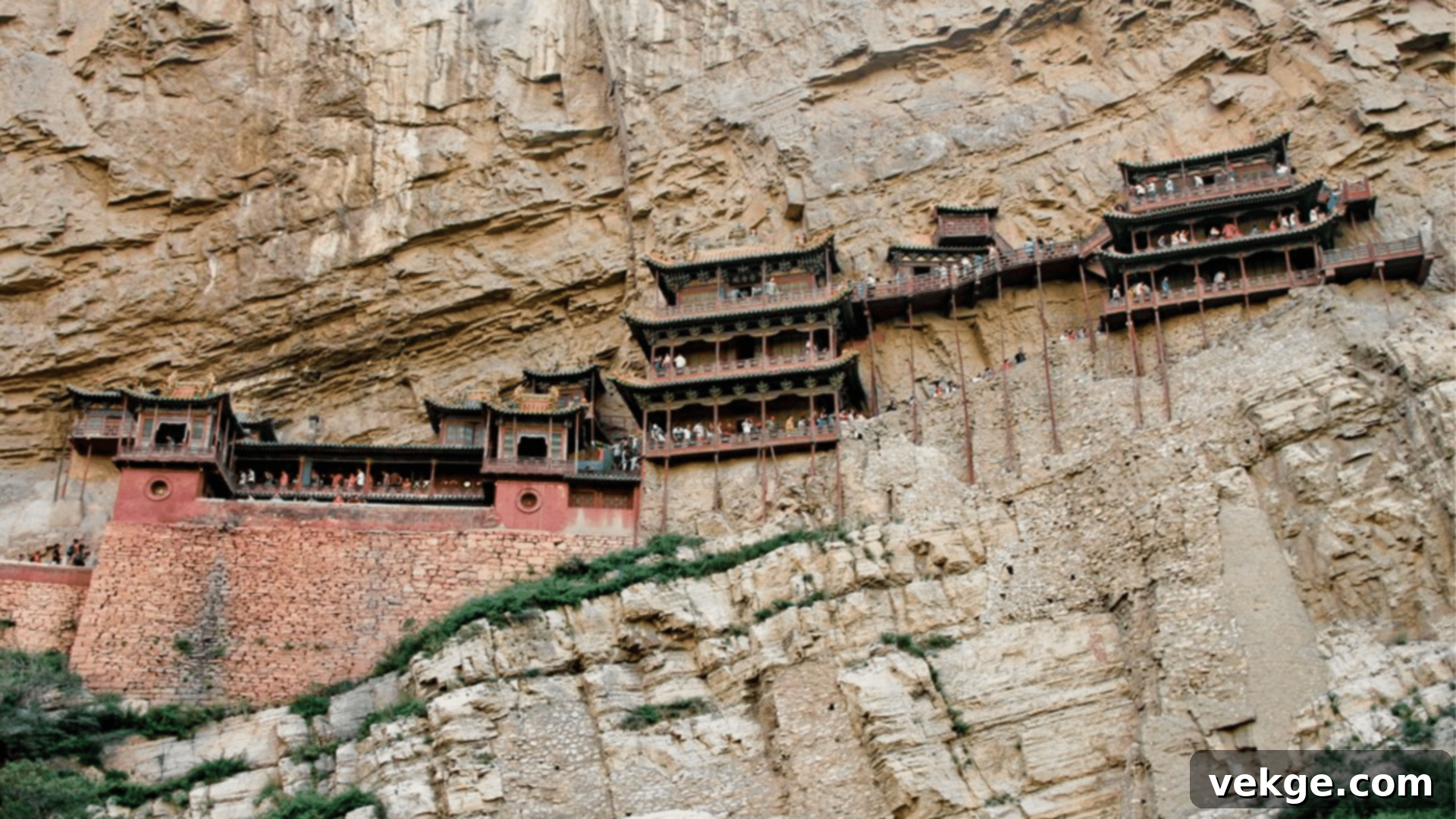
The Hanging Monastery (Xuankong Temple) is an engineering marvel that appears to defy gravity. Perilously built into a sheer cliff face near Mount Heng, this extraordinary structure showcases the incredible ingenuity and daring construction skills of ancient Chinese builders.
Key highlights:
- Uniquely supports three traditional Chinese religions: Buddhism, Taoism, and Confucianism, all within its walls.
- Ingeniously attached to a precipitous cliff, appearing to float hundreds of feet above the ground.
- Employs a complex system of wooden beams and structural supports, expertly carved into the rock face.
- Has remarkably survived for over 1,500 years, enduring harsh weather and geological shifts, a testament to its robust construction.
These ancient structures are more than just assemblies of stone and wood; they are vibrant chronicles of China’s past, connecting us directly to centuries of human creativity, spiritual devotion, and engineering prowess.
Iconic Religious and Cultural Heritage Sites
China’s religious buildings transcend their physical forms to become profound windows into the soul of Chinese culture. Each sacred site narrates a compelling story of faith, profound wisdom, and the enduring human quest for spiritual connection.
8. Temple of Confucius (Qufu)
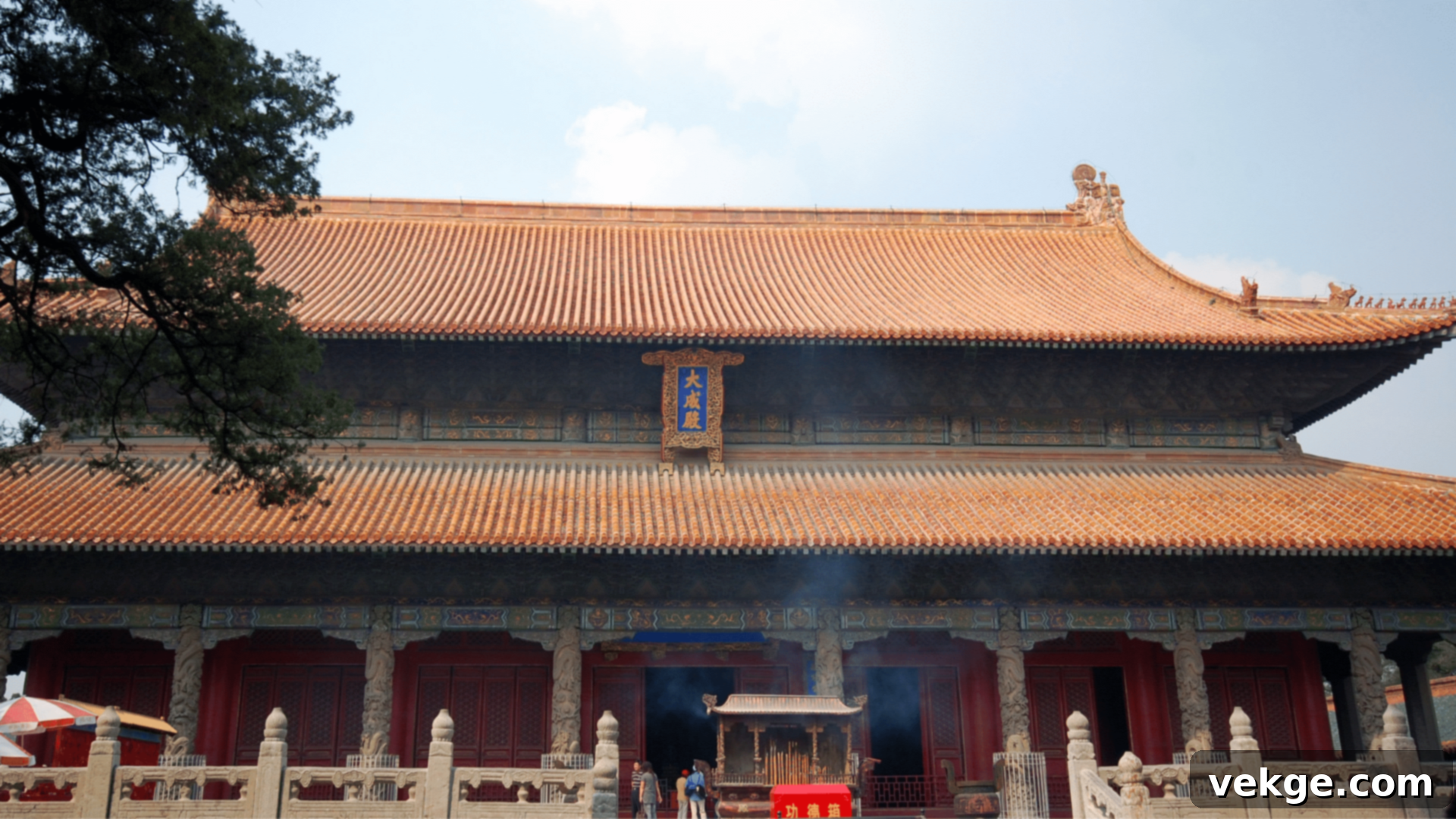
This grand temple complex in Qufu honors Confucius, the most influential philosopher in Chinese history, whose teachings shaped Chinese thought, education, society, and personal morality for over two millennia. It is a place of profound respect and intellectual legacy.
Key highlights:
- Located in Qufu, Shandong Province, Confucius’s hometown and the traditional birthplace of Confucianism.
- Recognized as the largest and most significant Confucian temple globally, serving as a revered pilgrimage site.
- Spans an impressive 183 acres (74 hectares) and contains over 460 rooms, reflecting its vast scale and importance.
- Alongside the Kong Family Mansion and Cemetery, it forms a UNESCO World Heritage Site celebrating Confucius’s enduring influence.
9. Labrang Monastery (Gansu)

Nestled in the remote mountains of Gansu province, Labrang Monastery is one of the largest and most influential centers of Tibetan Buddhist learning outside of Tibet. It stands as a powerful symbol of spiritual tradition, cultural heritage, and scholarly pursuit for the Gelug school of Tibetan Buddhism.
Key highlights:
- One of the six major monasteries of the Gelug (Yellow Hat) school of Tibetan Buddhism, holding immense spiritual significance.
- Historically housed thousands of monks, acting as a vibrant academic and spiritual community.
- Boasts a massive library, containing a vast collection of Buddhist scriptures, historical texts, and traditional Tibetan medicine.
- Plays a crucial role in preserving ancient Buddhist texts, traditions, and the distinct culture of the Tibetan people.
10. Big Wild Goose Pagoda (Xi’an)
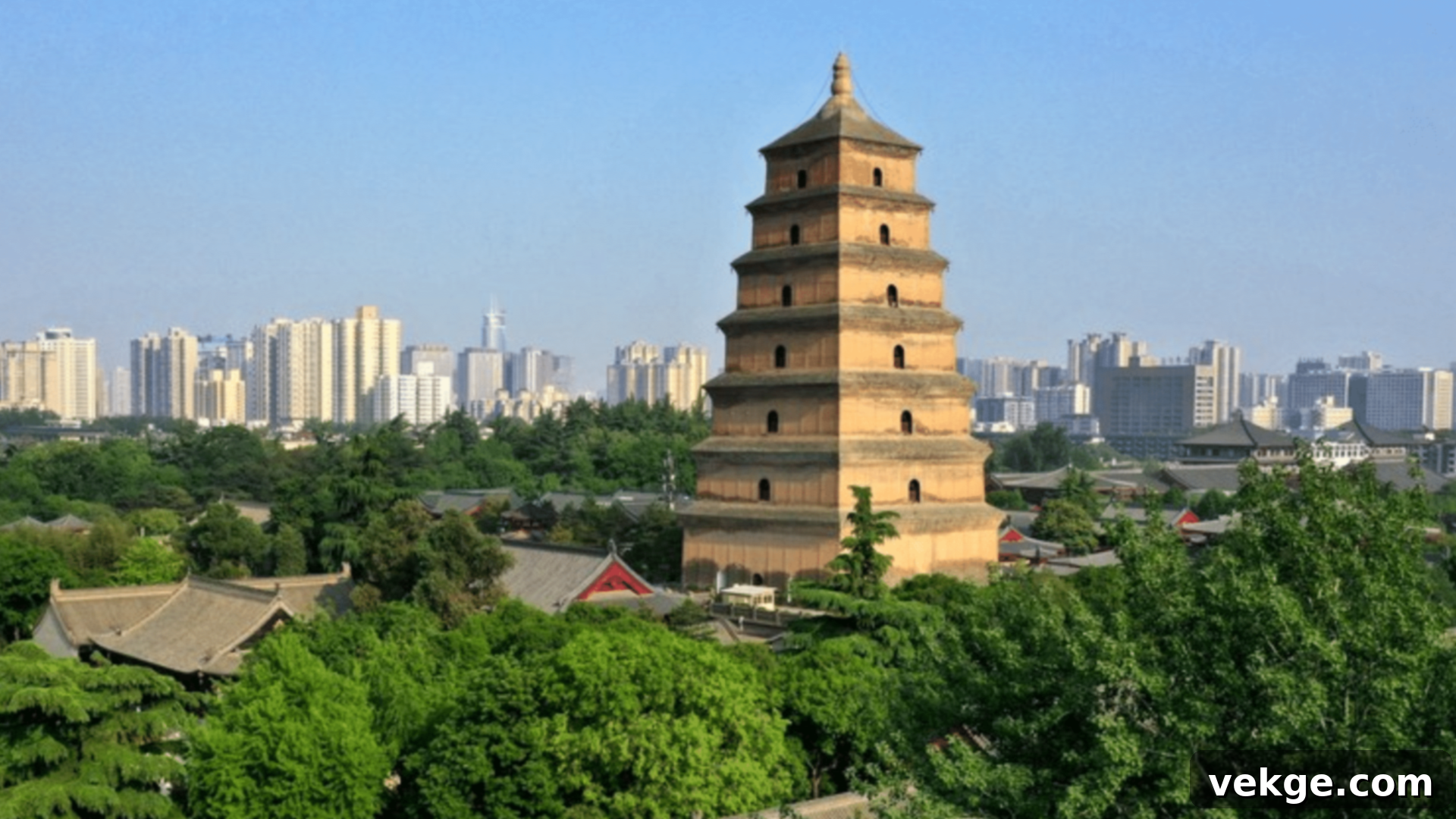
The Big Wild Goose Pagoda, with its stunning and gracefully ascending tower, tells the pivotal story of Buddhism’s introduction and flourishing in China. It beautifully marries ancient spiritual teachings with remarkable architectural elegance, becoming a symbol of cultural exchange and devotion.
Key highlights:
- Erected during the prosperous Tang Dynasty (652 AD) to house Buddhist scriptures brought back from India by the monk Xuanzang.
- Serves as a repository for important Buddhist scriptures, relics, and artifacts, safeguarding centuries of spiritual wisdom.
- Originally designed to protect and translate sacred Buddhist writings, central to the propagation of Buddhism in China.
- Stands seven stories tall (originally five), offering panoramic views of Xi’an and representing the enduring spread of Buddhism.
These revered sites are far more than mere constructions; they are living narratives that demonstrate the intricate interplay of ideas, beliefs, and cultural evolution. Every stone, every carving, and every hall recounts a piece of China’s deep and multifaceted history.
From the profound teachings of Confucius to the spiritual depth found within Buddhist monasteries, these sacred places profoundly remind us that buildings can transcend their physical forms. They embody the memories of the human spirit, intellectual enlightenment, and timeless connection across generations.
Modern and Contemporary Architectural Landmarks
China’s modern architectural landscape presents a dynamic canvas where boundless imagination converges with unparalleled engineering prowess. These striking contemporary structures narrate the compelling story of a nation rapidly accelerating into the future, all while maintaining a profound respect for its illustrious past.
11. Shanghai Tower (Shanghai)
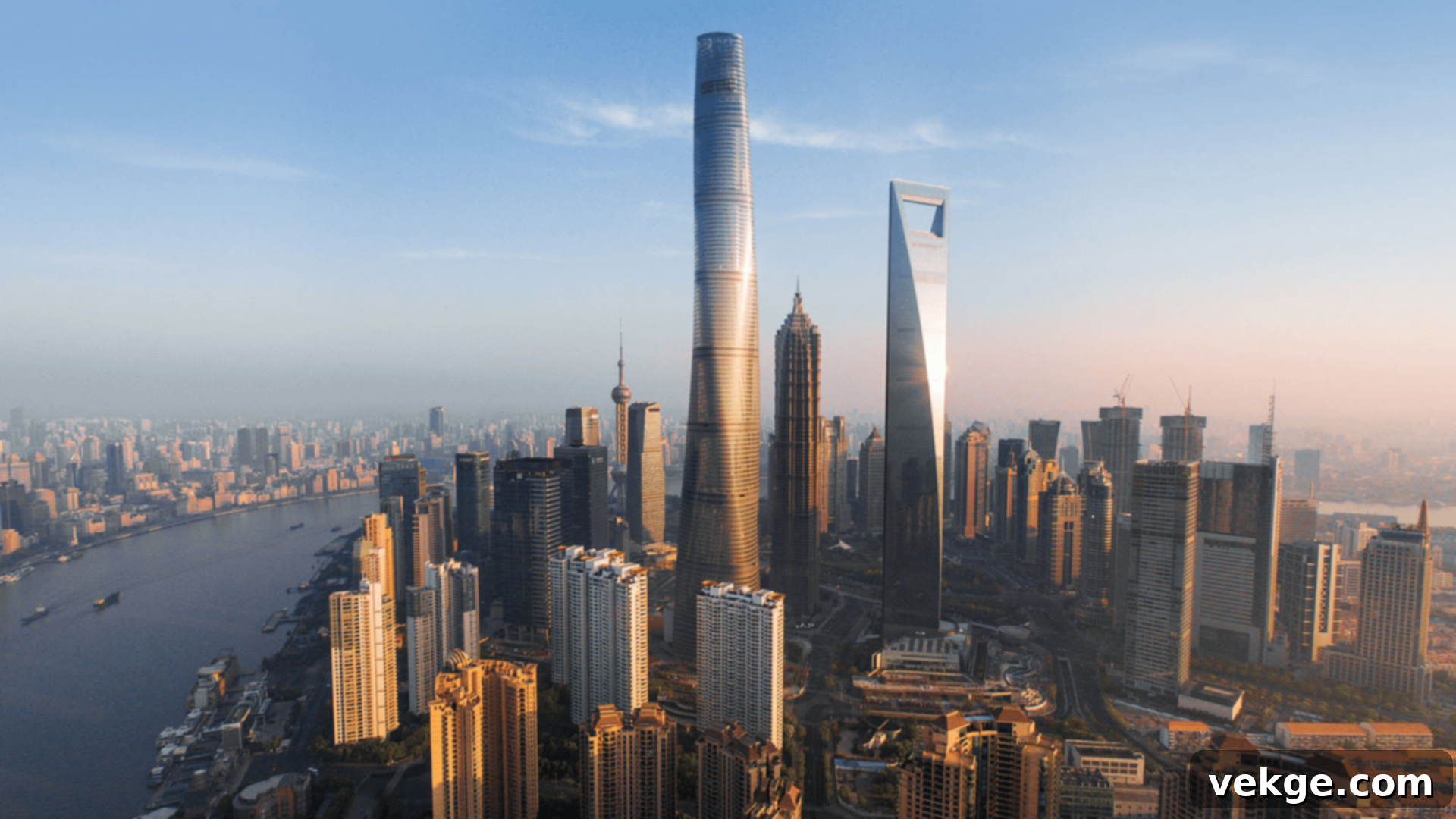
Dominating Shanghai’s iconic skyline, this colossal skyscraper elegantly twists towards the heavens like a massive, spiraling glass tornado. The Shanghai Tower stands as a powerful symbol of China’s breathtaking economic growth, groundbreaking technical capabilities, and ambitious urban vision.
Key highlights:
- Currently the second tallest building globally, a towering achievement in modern high-rise construction.
- Reaches an impressive height of 632 meters (2,073 feet), featuring a distinctive spiraling form.
- Completed in 2015, quickly becoming a defining feature of the Pudong financial district.
- Utilizes an advanced, innovative wind-resistant design, incorporating a 120-degree twist to reduce wind loads.
- Includes multiple observation decks, offering breathtaking panoramic views of Shanghai and the Huangpu River.
12. CCTV Headquarters (Beijing)
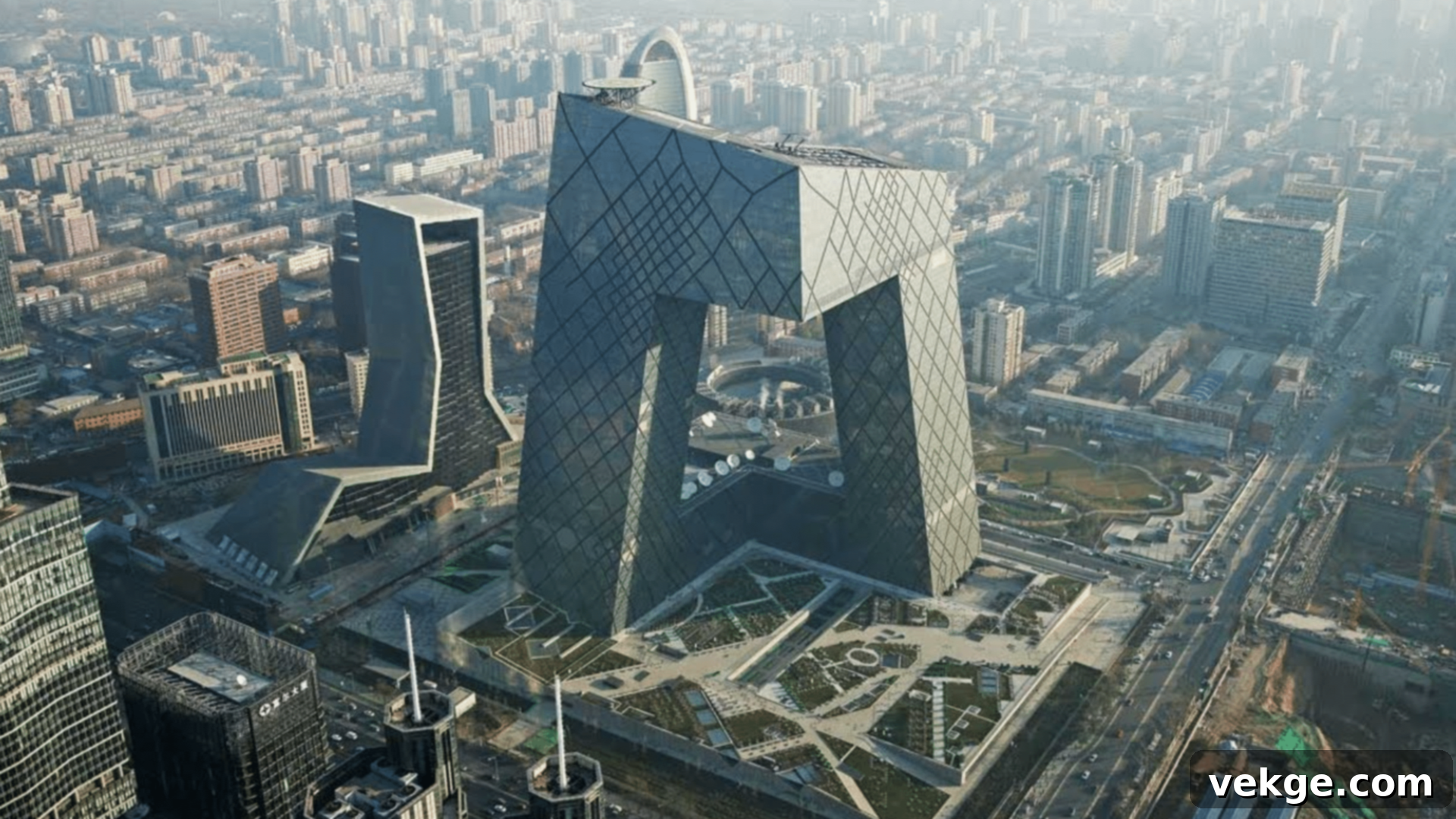
The CCTV Headquarters building is an architectural anomaly, unlike anything seen before. Its distinctive, unconventional shape challenges traditional architectural norms, making a bold and unforgettable statement in the heart of Beijing’s central business district.
Key highlights:
- Designed by the renowned Dutch architect Rem Koolhaas and Ole Scheeren of OMA (Office for Metropolitan Architecture).
- Features a unique “twisted loop” or “pants” design, creating an optical illusion of a continuous, irregular form.
- Serves as the headquarters for China Central Television, consolidating various functions into one innovative structure.
- Boldly challenges conventional skyscraper designs, showcasing a radical approach to form and function.
- Represents a significant landmark in contemporary architectural thinking, pushing boundaries of structural engineering.
13. National Centre for the Performing Arts (Beijing)
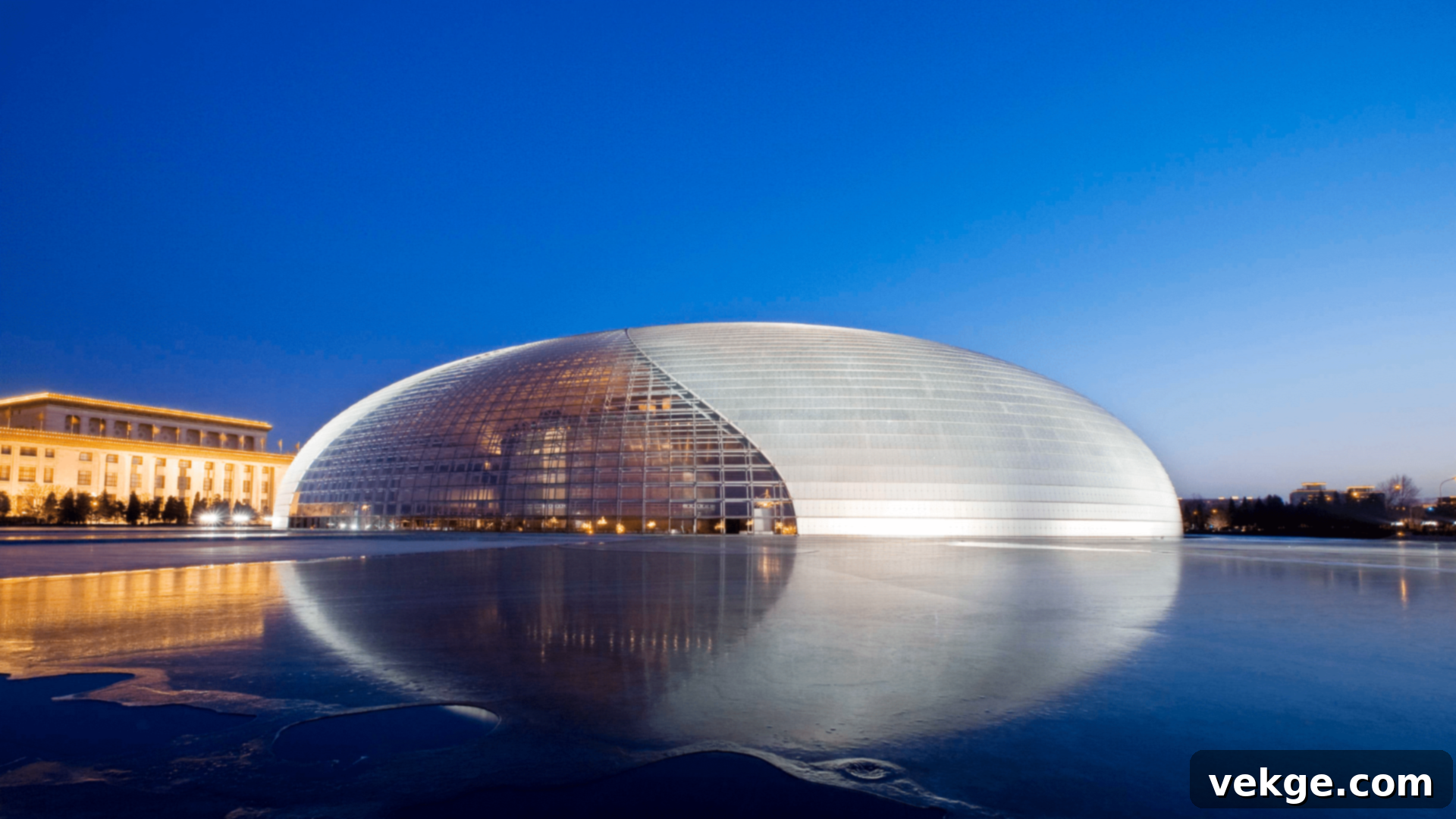
Affectionately nicknamed “The Giant Egg” by locals, this remarkable building lives up to its moniker. This spherical, titanium-and-glass structure sits gracefully like a massive silver bubble, seemingly floating on an artificial lake in the cultural heart of Beijing.
Key highlights:
- Encapsulated by a stunning artificial lake, creating a reflective surface that enhances its unique dome shape.
- Its design resembles a massive, iridescent dome, blending seamlessly with its water surroundings.
- Serves as a premier venue for world-class opera, concerts, and theatrical performances.
- Designed by the acclaimed French architect Paul Andreu, known for his bold and fluid designs.
- A striking fusion of contemporary art and architectural innovation, offering a sophisticated cultural experience.
14. Beijing National Stadium (Bird’s Nest)
Constructed specifically for the 2008 Beijing Olympic Games, this stadium is an architectural icon, resembling a colossal steel nest. Its complex, interwoven design immediately captivated global attention, making it one of the most recognizable and celebrated buildings in the world.
Key highlights:
- Universally nicknamed “the Bird’s Nest” due to its intricate latticework of steel beams.
- Hosted the spectacular opening and closing ceremonies of the 2008 Summer Olympics, as well as athletic events.
- Features a groundbreaking steel web design, which is both structurally innovative and visually stunning.
- Boasts a seating capacity of approximately 80,000, making it a major sporting and event venue.
- Quickly became a global architectural icon, representing China’s emergence on the world stage.
15. Oriental Pearl Tower (Shanghai)
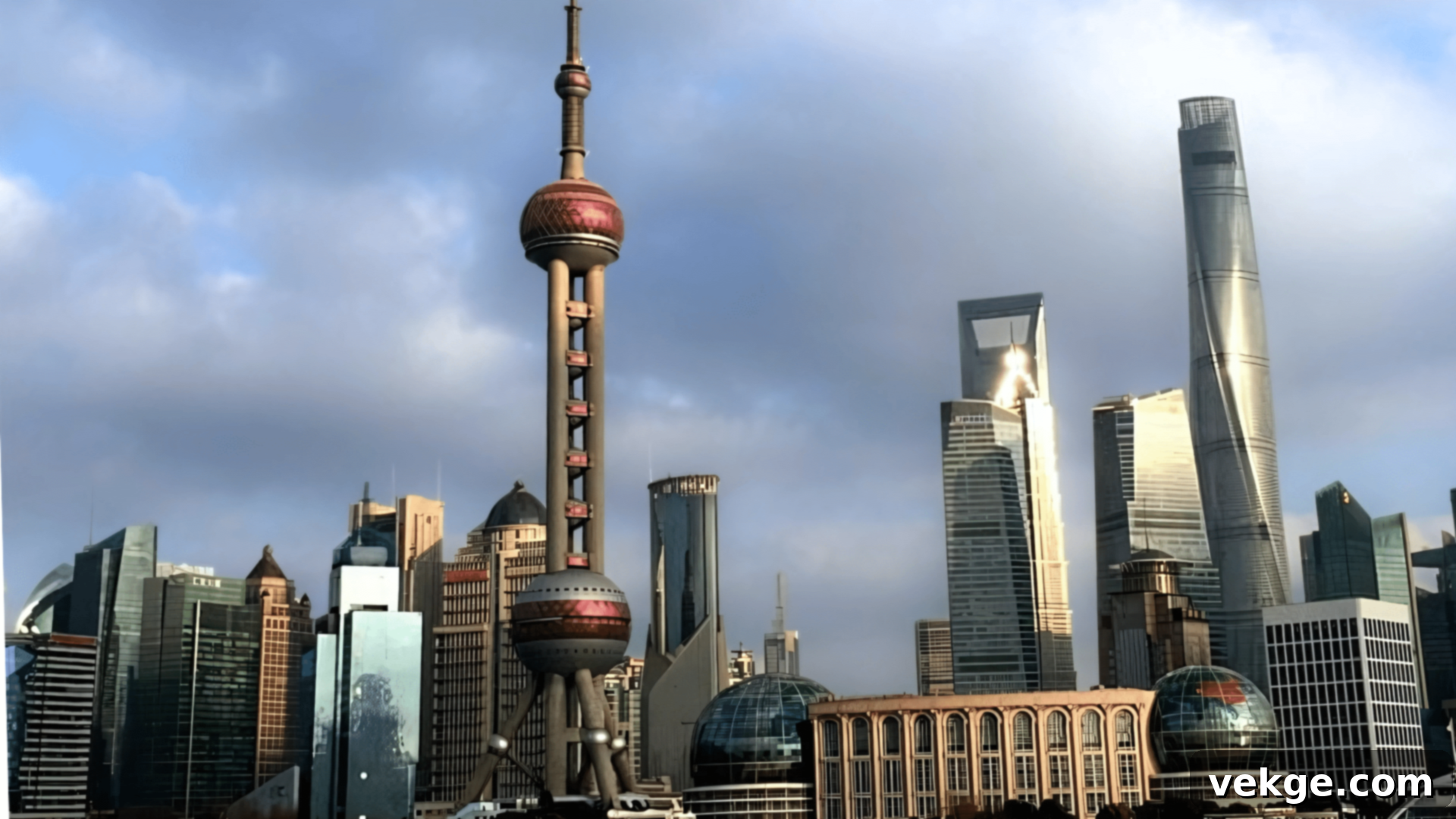
An unmistakable landmark, the Oriental Pearl Tower is a unique structure designed to resemble a collection of pearls meticulously strung together. It has been a prominent and defining feature of Shanghai’s ever-evolving skyline since its completion in the early 1990s.
Key highlights:
- Distinctive design features multiple spherical levels, or “pearls,” at different heights.
- Stands at an impressive height of 468 meters (1,535 feet), offering unparalleled views.
- Includes various observation decks, a revolving restaurant, and a history museum within its unique spheres.
- Represents Shanghai’s dynamic modern spirit and its rapid transformation into a global metropolis.
- An enduring symbol of the city’s technological progress and architectural ambition.
16. Guangzhou Opera House (Guangzhou)
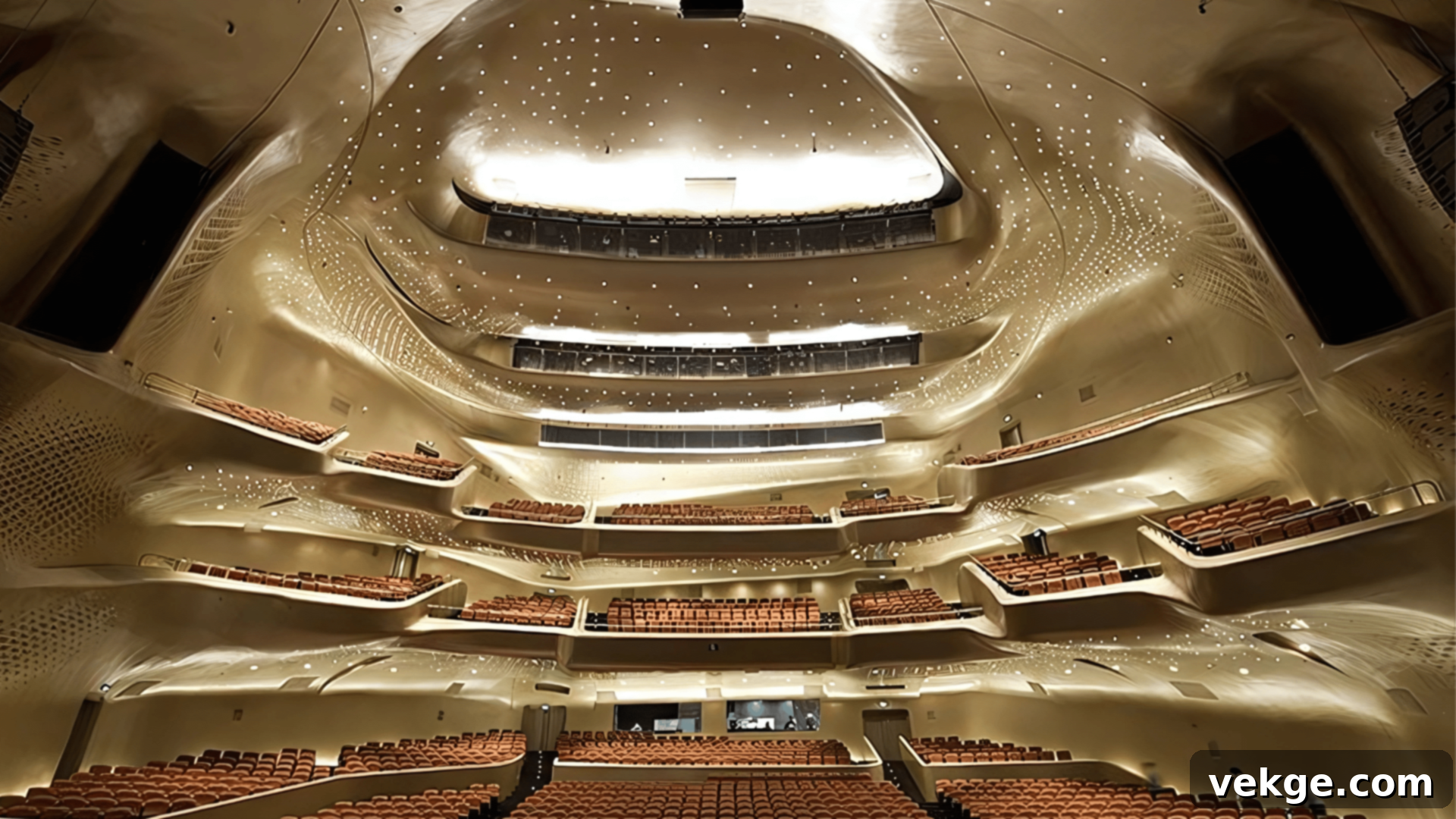
Designed by the legendary architect Zaha Hadid, the Guangzhou Opera House appears as if it were sculpted by nature itself, resembling smooth, erosion-shaped stones along the Pearl River. It stands as a stunning work of art that seamlessly functions as a world-class performance venue.
Key highlights:
- Its striking exterior evokes natural rock formations or pebbles, creating a harmonious dialogue with the landscape.
- Strategically located near the serene Pearl River, enhancing its organic and fluid design.
- Masterfully combines the building’s form with its surrounding environment, blurring the lines between architecture and landscape.
- Characterized by fluid, organic shapes and innovative structural solutions, a signature of Zaha Hadid’s work.
- Represents the cutting-edge of contemporary architectural design, pushing the boundaries of form and function.
These modern landmarks vividly demonstrate how China brilliantly fuses creativity, advanced technology, and a distinct cultural identity. Each building articulates the story of a nation boldly moving forward, yet always remaining deeply connected to its historical roots.
Unique and Lesser-Known Architectural Gems
Beyond the universally recognized landmarks, China harbors a treasure trove of buildings that transcend typical architectural classifications. These structures uniquely embody creativity, innovation, and the enduring human spirit of thinking differently and pushing boundaries.
17. Ningbo History Museum (Ningbo)
The Ningbo History Museum is more than just a repository of artifacts; it is an architectural masterpiece crafted from recycled materials. Local architect Wang Shu, a Pritzker Prize laureate, conceived a structure that appears to organically emerge directly from the earth, blending ancient techniques with modern sustainability.
Key highlights:
- Constructed using tens of thousands of salvaged bricks, tiles, and stones collected from demolished traditional buildings, promoting sustainable design.
- Its rugged, fortress-like exterior creates a powerful sense of history and permanence, echoing ancient Chinese construction.
- Has received significant accolades for its sustainable design principles and innovative use of reclaimed materials.
- Masterfully integrates with its natural surroundings, reflecting traditional Chinese architectural harmony with nature.
- Illustrates how humble, old materials can be transformed into new forms of profound beauty and cultural significance.
18. Kowloon Ventilation Building (Hong Kong)
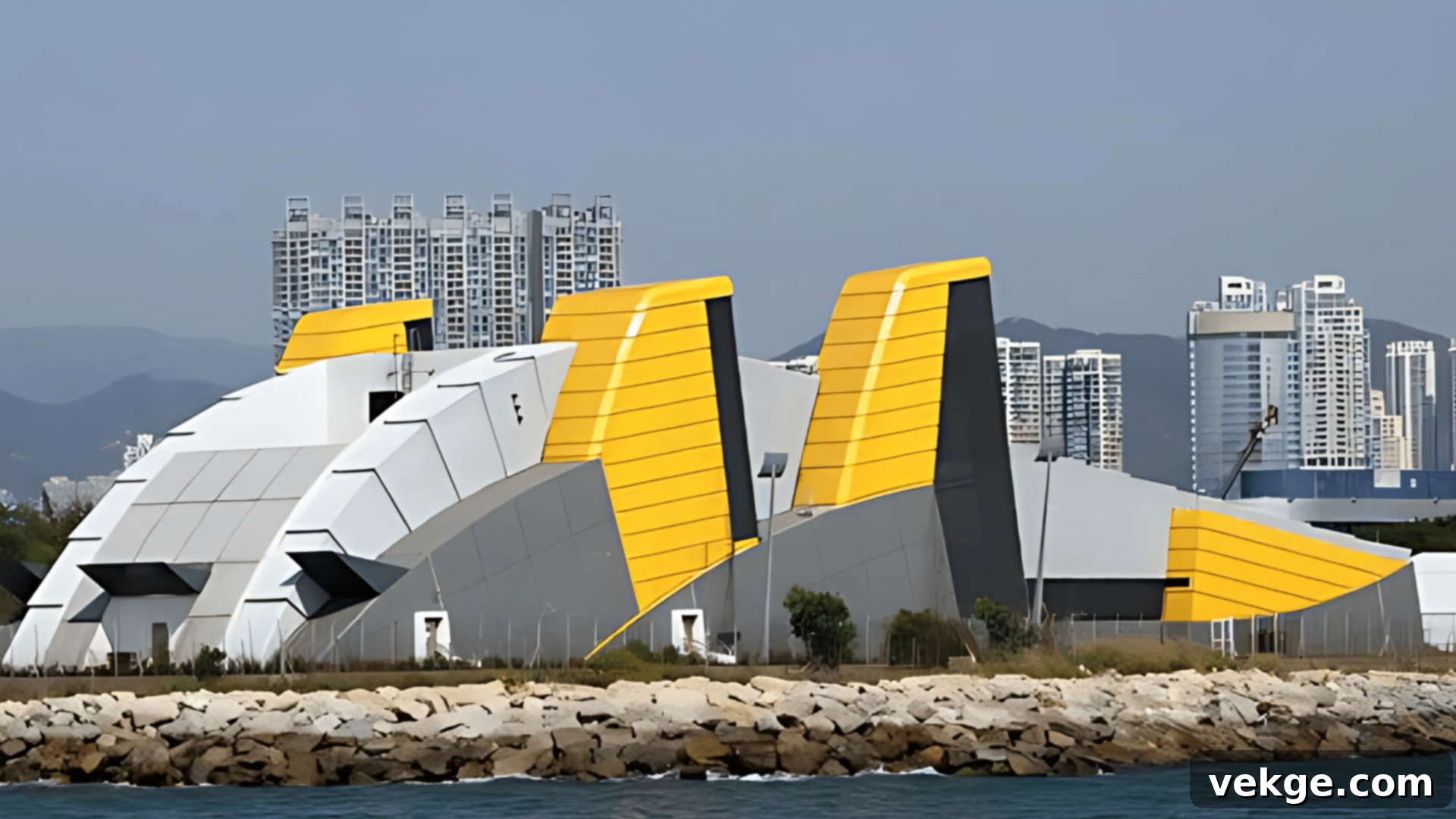
Who says industrial buildings cannot be beautiful? The Kowloon Ventilation Building in Hong Kong decisively proves that even highly functional infrastructure can be transformed into striking works of art, adding an unexpected aesthetic dimension to the urban landscape.
Key highlights:
- A crucial functional component of Hong Kong’s extensive subway system, providing essential ventilation.
- Designed with a sleek, minimalist aesthetic that resembles a modern sculpture, defying typical industrial building appearances.
- Transforms a purely functional engineering requirement into a visually compelling and architecturally significant design.
- Stands out strikingly in Hong Kong’s densely packed urban environment, offering a moment of deliberate design.
- A testament to the idea that beauty and thoughtful design can and should be integrated into every aspect of urban development.
19. Workers’ Stadium (Beijing)
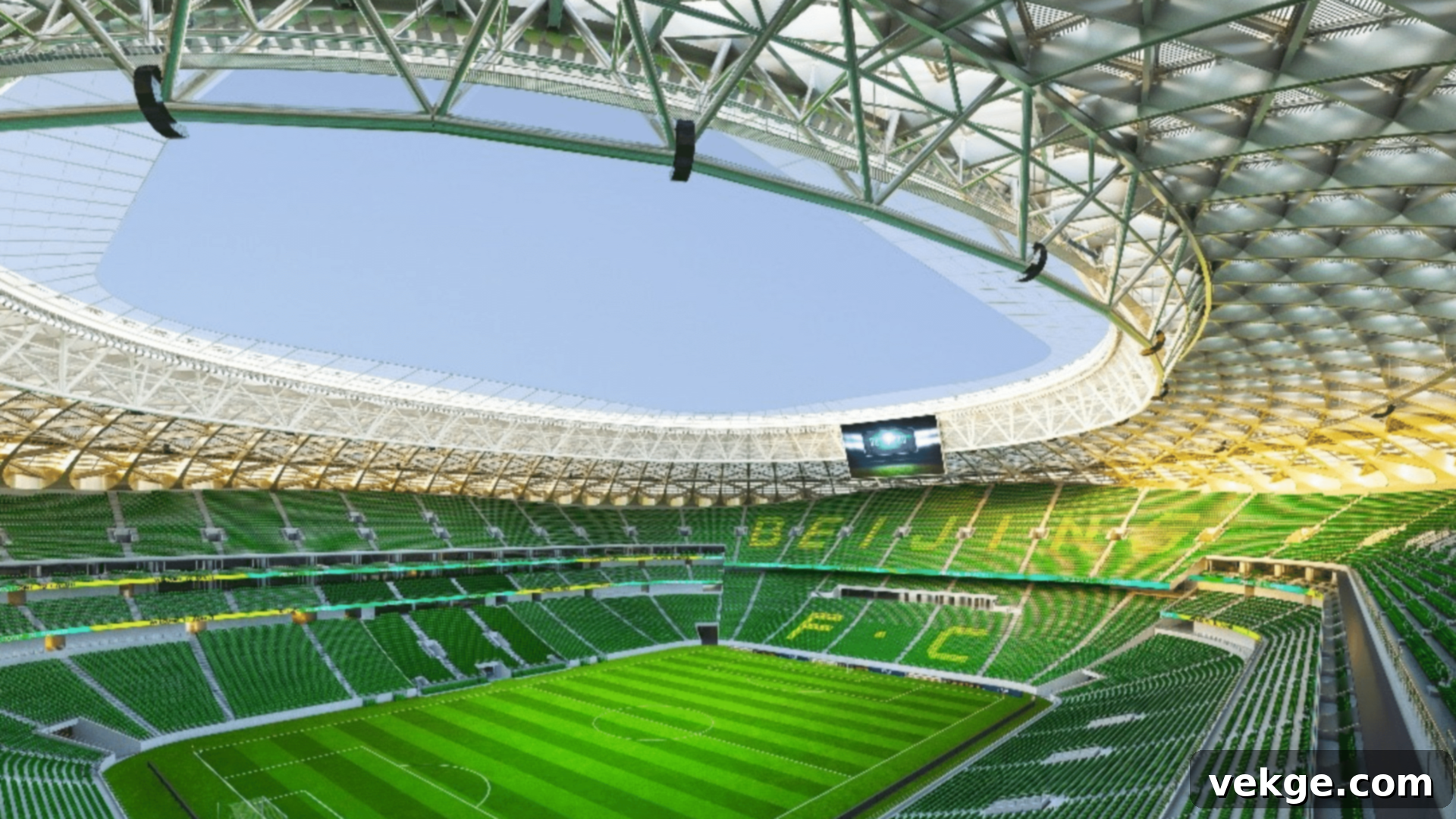
More than simply a sports venue, the Workers’ Stadium in Beijing encapsulates the architectural vision of mid-20th-century China. It stands as a significant symbol of a period marked by profound social changes, national ambition, and collective pride.
Key highlights:
- Originally constructed in the late 1950s, a flagship project showcasing the early achievements of the People’s Republic of China.
- An iconic example of socialist architecture, characterized by its grand scale, functional design, and monumental presence.
- Strategically located in central Beijing, symbolizing national development and aspirations.
- Has hosted numerous important sporting events, including the Asian Games, and significant cultural gatherings.
- Represents a distinct historical moment in China’s architectural and socio-political evolution, reflecting an era of collective effort.
Each of these buildings profoundly demonstrates that architecture is about more than mere walls and roofs. They are vibrant narratives, capturing historical moments and showcasing how human minds conceptualize space, utility, and aesthetic design.
These structures serve as poignant reminders that every building possesses a soul, a unique history, and an intrinsic ability to connect us more deeply with the world around us.
Additional Famous Structures Worth Exploring in China
China continues to astonish with an array of buildings that perpetually push the boundaries of imagination and engineering. These remarkable structures brilliantly illustrate how unparalleled creativity harmonizes with advanced engineering in the most spectacular ways.
20. Tiananmen (Gate of Heavenly Peace) (Beijing)
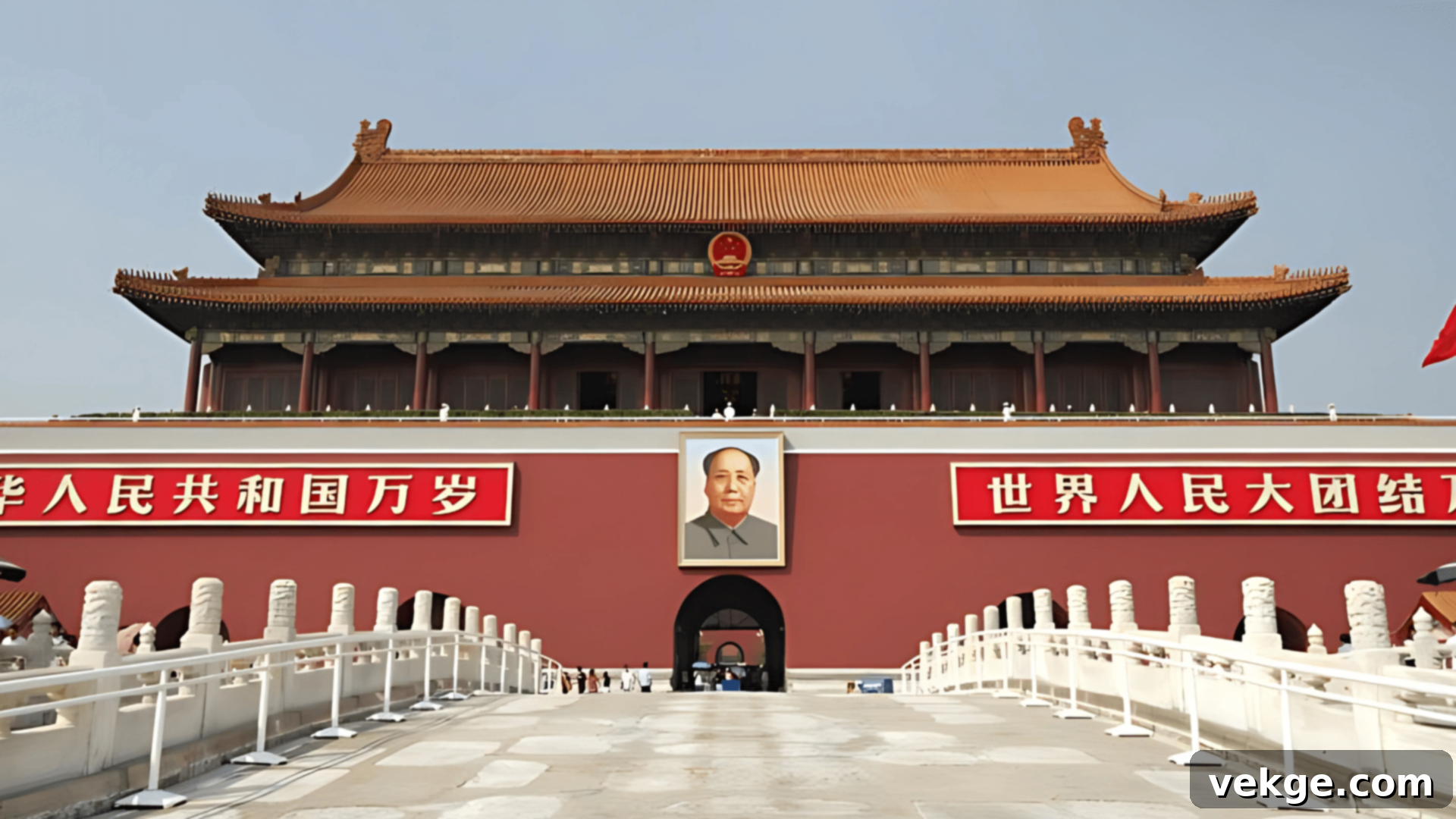
More than just a ceremonial gate, Tiananmen stands as the symbolic heart of Beijing and, by extension, of modern China. It is an enduring icon of national pride, profound historical significance, and a potent emblem of the nation’s political narrative.
Key highlights:
- Prominently located at the northern edge of Tiananmen Square, in the absolute center of Beijing.
- Serves as the majestic main entrance to the Forbidden City, symbolizing access to imperial power.
- Represents centuries of China’s political history, from imperial decrees to modern national declarations.
- An indispensable national landmark, frequently featured in state events and widely recognized globally.
- Its presence powerfully connects China’s imperial past with its contemporary identity and future aspirations.
21. Beijing Daxing International Airport (Beijing)
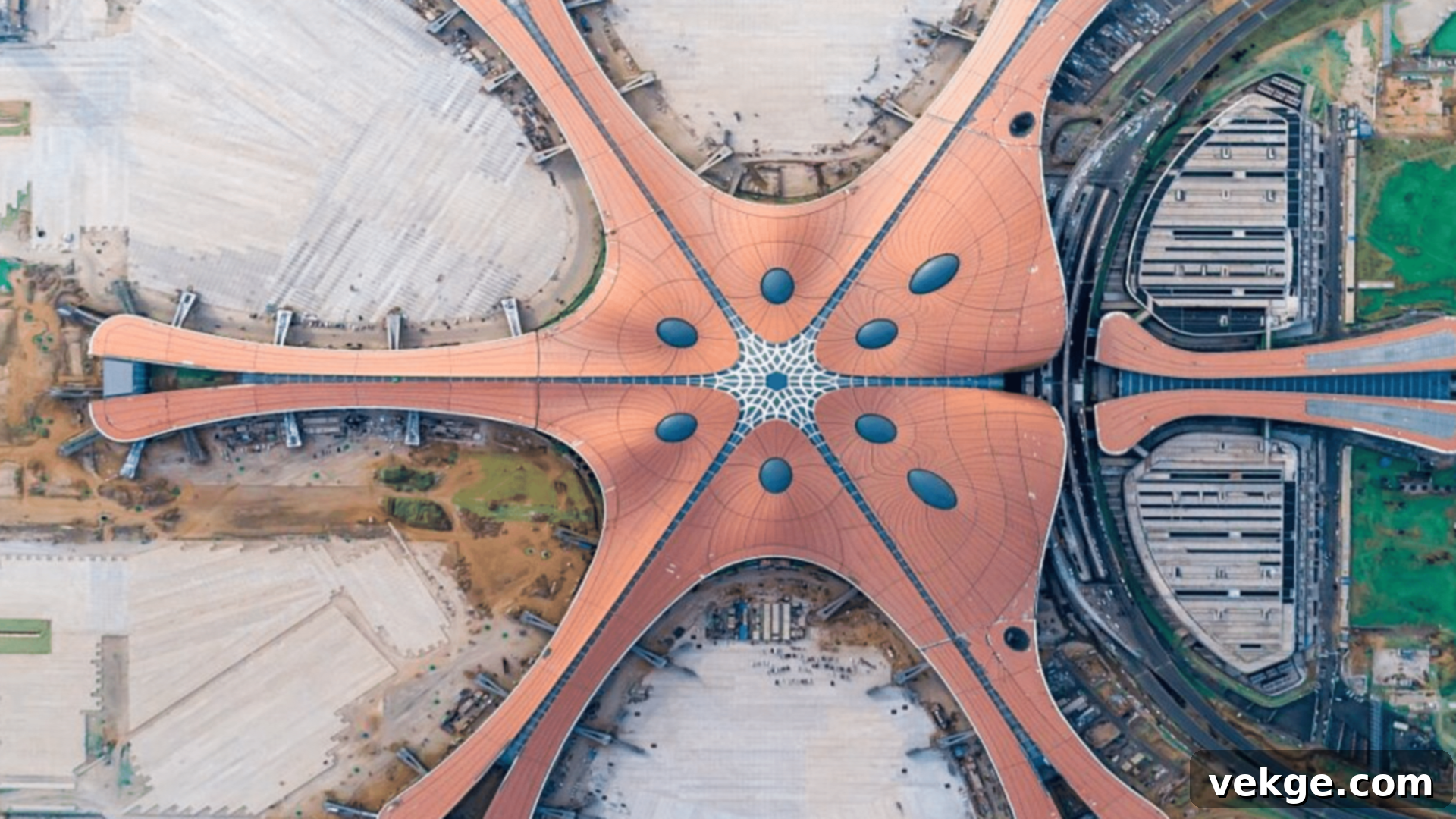
From an aerial perspective, Beijing Daxing International Airport strikingly resembles a giant starfish, extending its arms in multiple directions. Designed by the visionary architect Zaha Hadid, this airport epitomizes how grand-scale infrastructure can be both exceptionally functional and breathtakingly beautiful.
Key highlights:
- Its distinctive radial, starfish-like design minimizes walking distances for passengers within its vast terminal.
- Recognized as the world’s largest single-building airport terminal by area, a testament to its monumental scale.
- Covers an immense area of approximately 700,000 square meters (7.5 million sq ft) for the terminal building alone.
- Incorporates smart energy designs and sustainable features, setting new standards for eco-friendly airport architecture.
- Seamlessly connects multiple transportation systems, including high-speed rail, creating a highly efficient transit hub.
22. Bank of China Tower (Hong Kong)
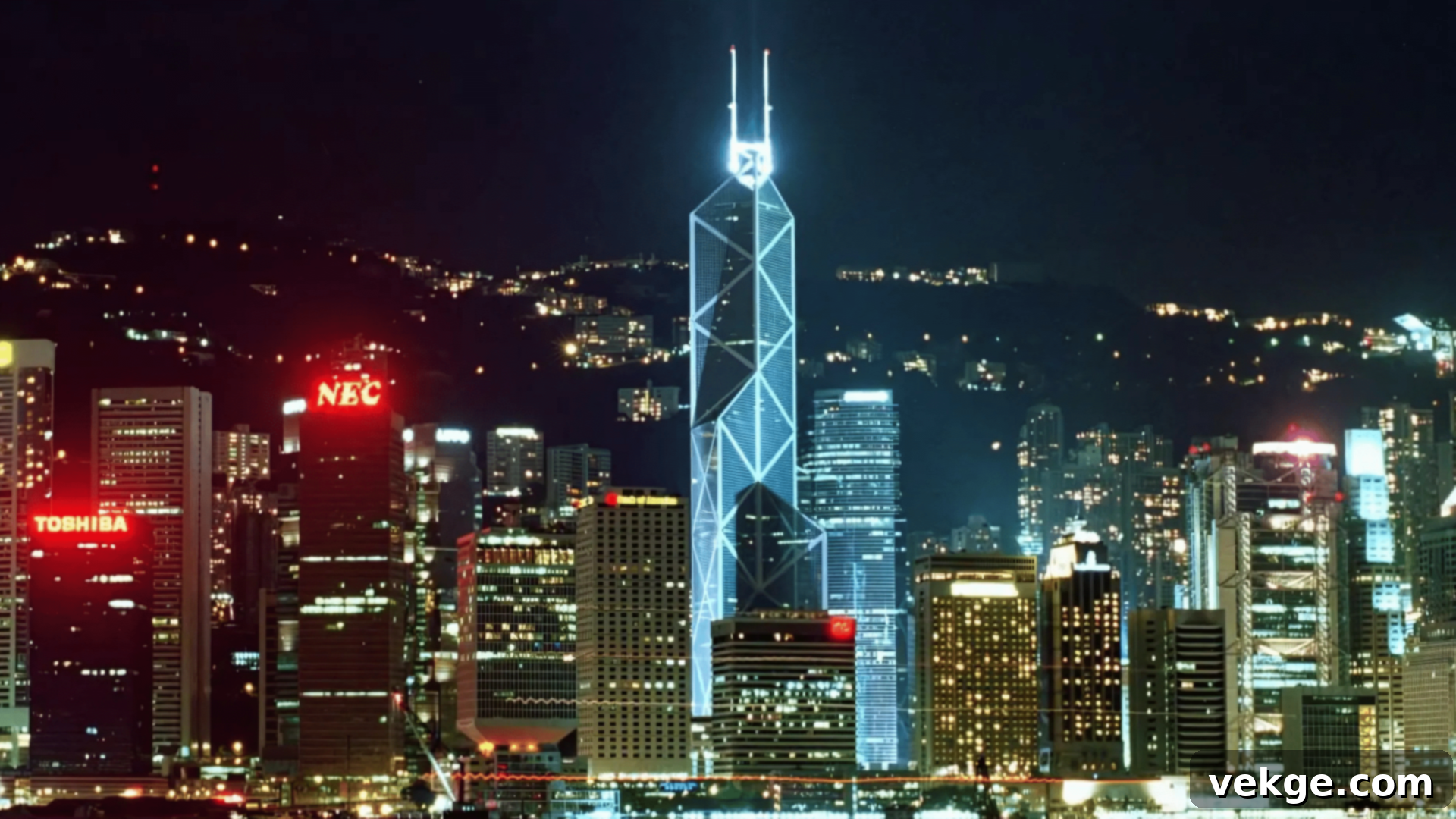
Soaring dramatically into Hong Kong’s iconic skyline, the Bank of China Tower’s unique façade resembles a cluster of bamboo shoots reaching skyward. Designed by the esteemed I.M. Pei, it remains a celebrated masterpiece of modern architecture, seamlessly blending traditional symbolism with avant-garde structural design.
Key highlights:
- Features a distinctive triangular framework, which provides both structural stability and a powerful visual aesthetic.
- Its design subtly reflects traditional Chinese elements, such as the growth and strength symbolized by bamboo.
- Reaches an impressive height of 367 meters (1,205 feet), making it one of Hong Kong’s tallest and most recognizable buildings.
- An iconic and integral part of Hong Kong’s world-famous, densely packed skyline.
- Completed in 1990, it set new benchmarks for skyscraper design and engineering in Asia.
23. China Zun Tower (Beijing)
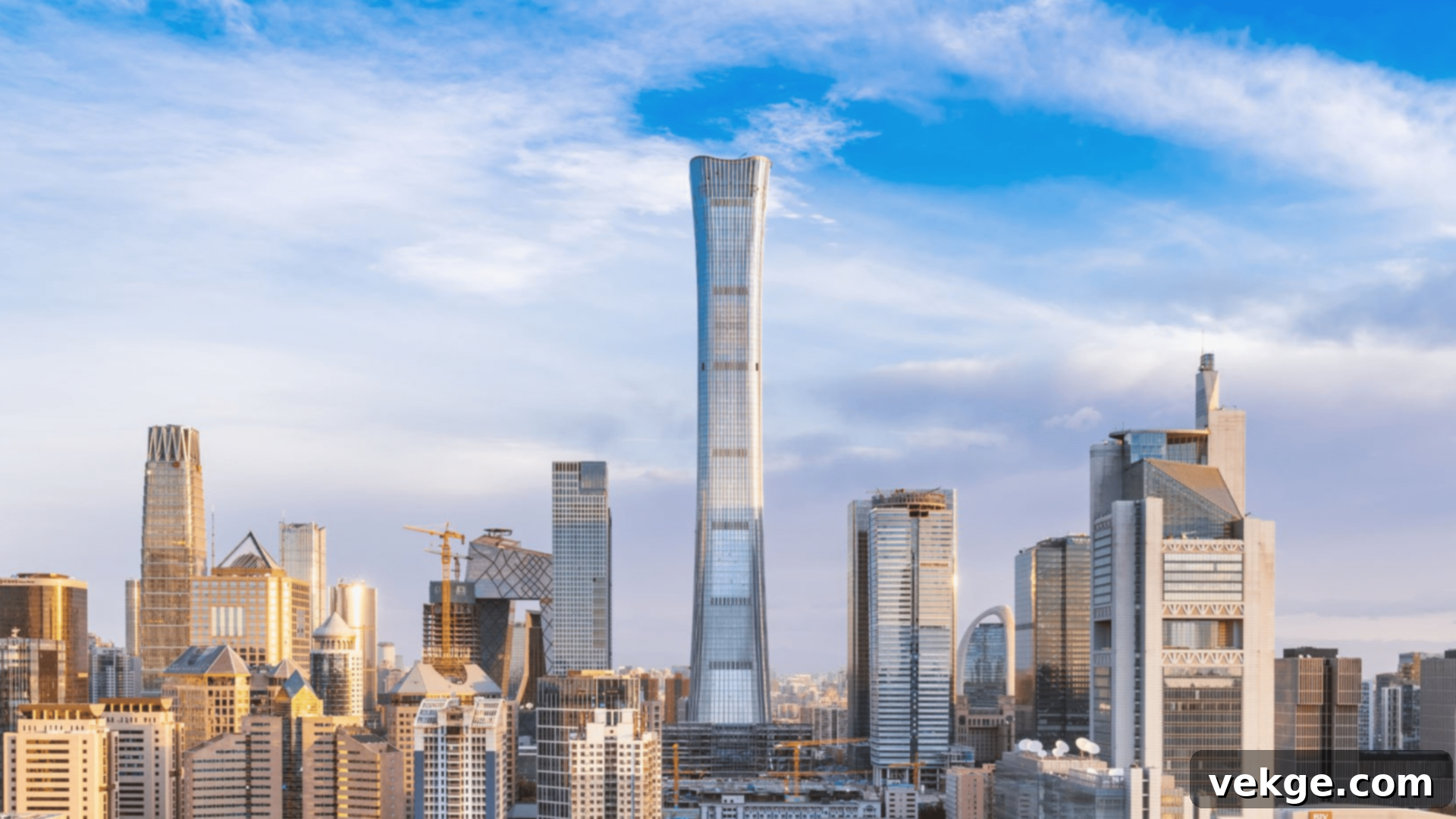
Named after an ancient Chinese ritual wine vessel, the “Zun,” this majestic skyscraper perfectly marries ancient cultural symbolism with contemporary architectural ambition. The China Zun Tower stands as the undisputed tallest building in Beijing, a beacon of modern Chinese design.
Key highlights:
- Stands at a staggering height of 528 meters (1,732 feet), dominating Beijing’s cityscape.
- Its elegant, curvaceous form directly references the traditional Chinese “zun” vessel, embodying cultural heritage in a modern context.
- Strategically situated in Beijing’s central business district, symbolizing the city’s economic prowess.
- Represents the pinnacle of modern Chinese design, showcasing a profound blend of form, function, and cultural meaning.
- A powerful example of how contemporary architecture can effectively integrate tradition and cutting-edge innovation.
24. Galaxy SOHO (Beijing)
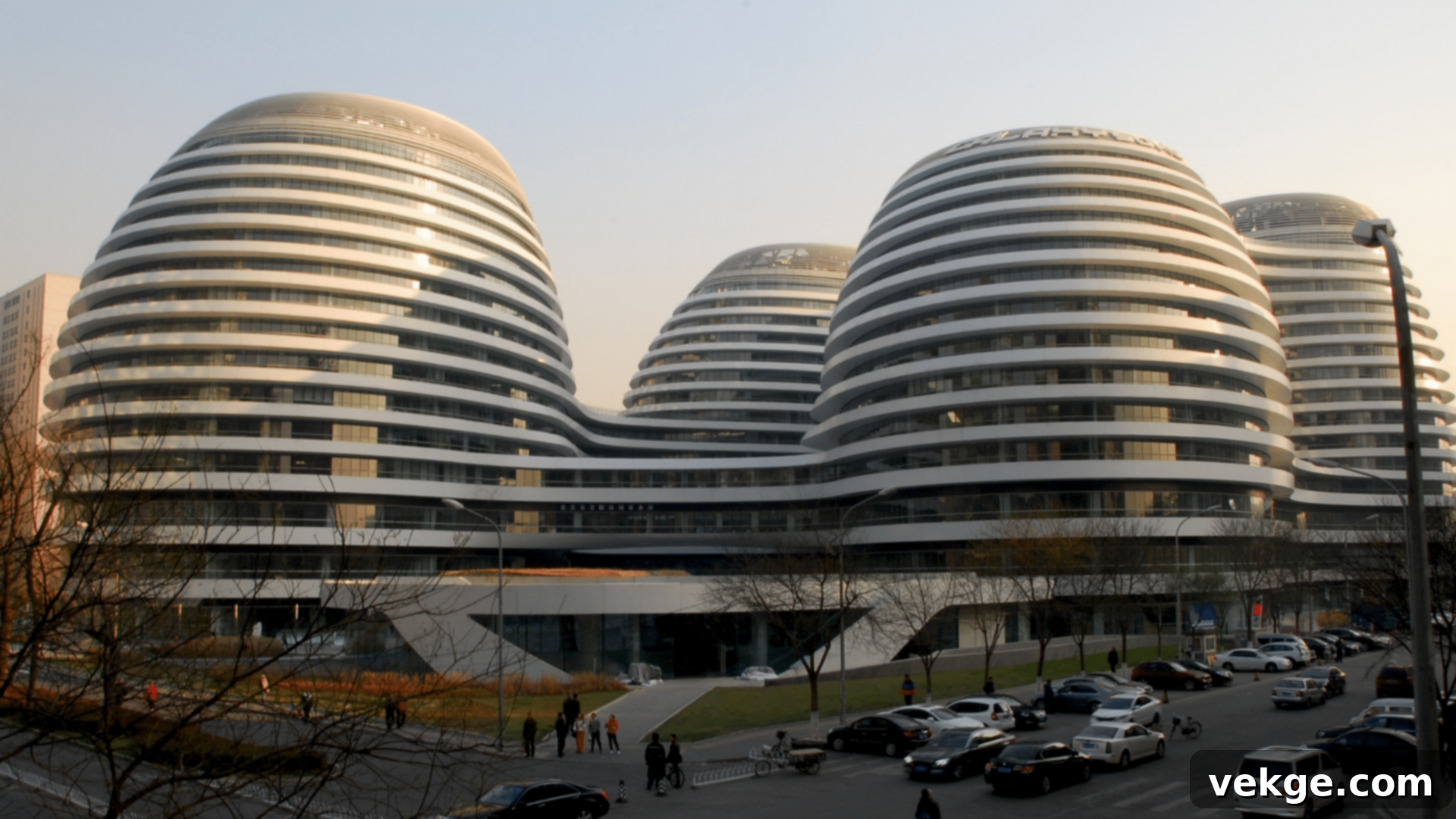
The Galaxy SOHO building appears as if it has flown in from a distant, futuristic realm. Its smooth, flowing curved shapes effortlessly connect multiple dome-like structures, creating a seamless, gravity-defying architectural marvel that redefines urban space.
Key highlights:
- Another extraordinary creation by the visionary architect Zaha Hadid, known for her distinctive parametric designs.
- Features an organic, flowing aesthetic with continuous curves that evoke a sense of fluid movement.
- Comprises four main domed structures interconnected by bridges, creating a dynamic and integrated complex.
- Characterized by smooth, gleaming white surfaces that enhance its futuristic and sculptural appearance.
- A seminal example of modern urban design, emphasizing public spaces, connectivity, and innovative aesthetics.
25. Chengdu New Century Global Center (Chengdu)
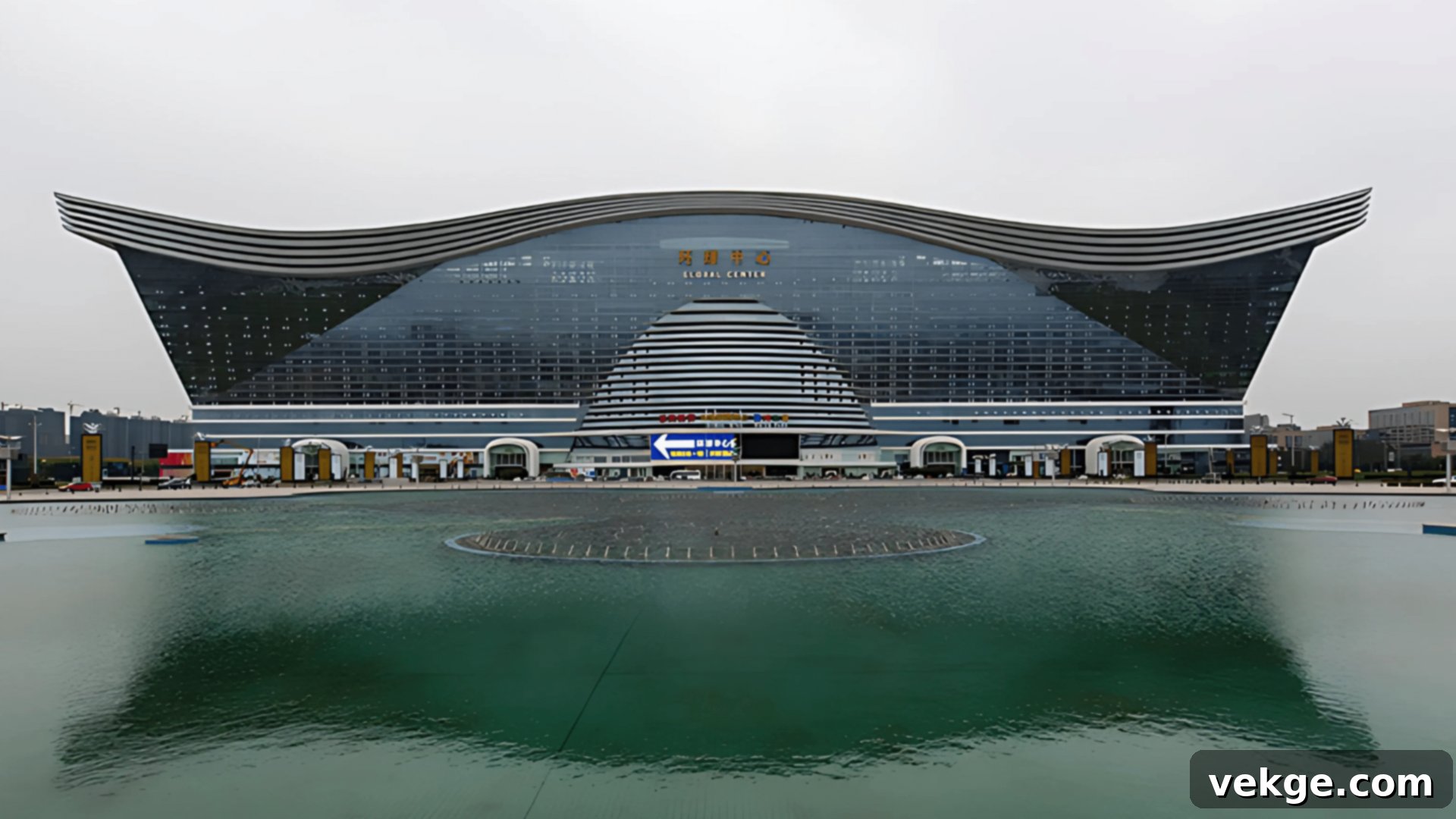
Envision the world’s single largest building. Now, imagine it packed with an astonishing array of shops, luxurious hotels, office spaces, and even a sprawling indoor water park. This monumental structure in Chengdu delivers exactly that, on an unprecedented scale.
Key highlights:
- Holds the distinction of being the largest building in the world by floor area, encompassing an astonishing range of functions.
- Contains multiple vast entertainment spaces, including a massive indoor water park, a simulated beach, and an IMAX cinema.
- Covers an incredible 1.7 million square meters (18 million sq ft) of floor space, a truly staggering figure.
- Features an enormous indoor beach complete with artificial waves, bringing coastal leisure inland.
- Houses hotels, offices, extensive shopping malls, and cultural venues, functioning as a self-contained urban environment.
26. Suzhou Museum (Suzhou)
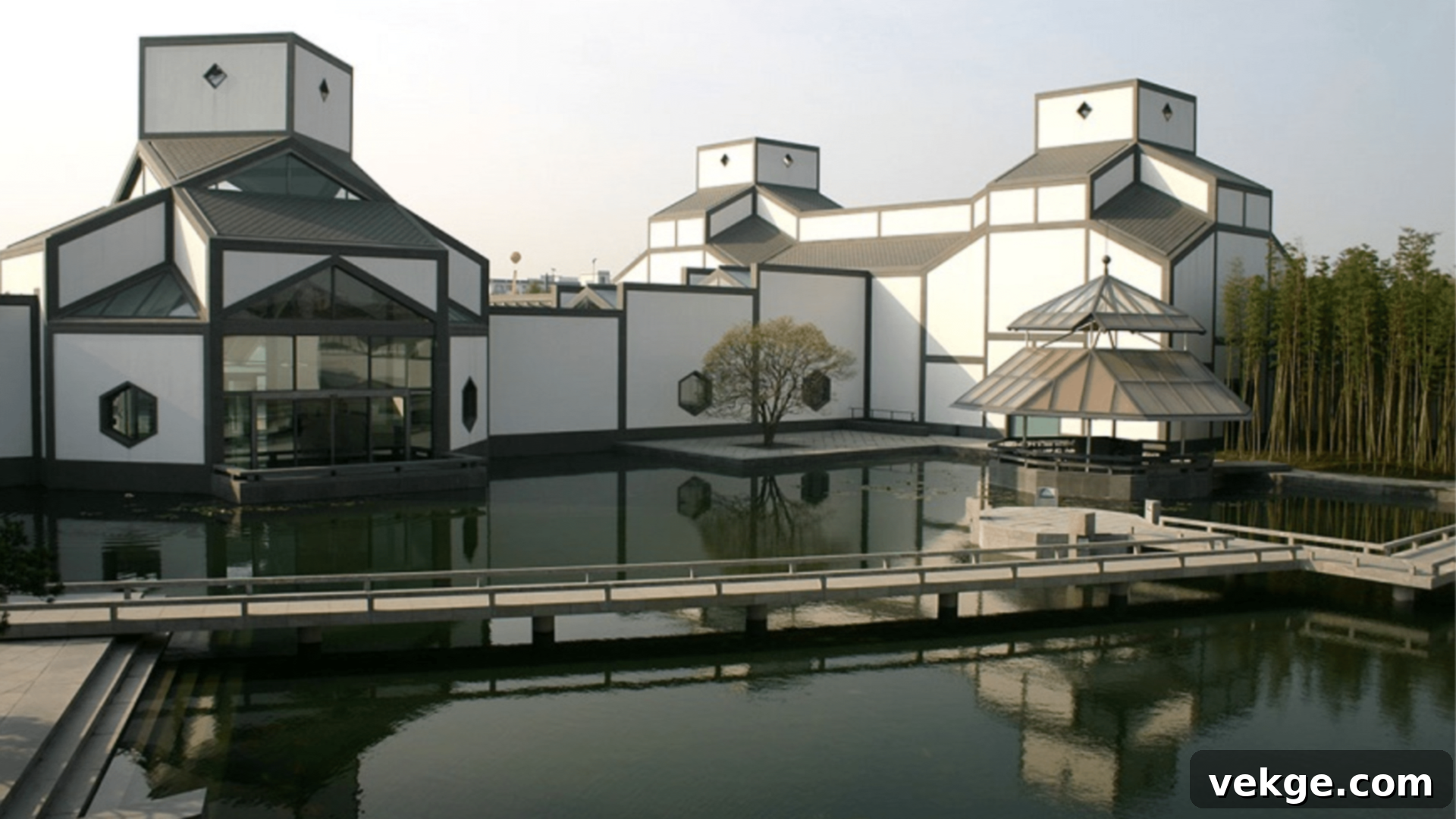
Designed by the celebrated architect I.M. Pei, the Suzhou Museum stands as a brilliant exemplar of how traditional Chinese design principles can be seamlessly integrated with modern architectural aesthetics. It is a graceful and harmonious blend of ancient and contemporary styles, reflecting local heritage.
Key highlights:
- A masterpiece created by the legendary architect I.M. Pei, renowned for his minimalist yet culturally resonant designs.
- Masterfully blends traditional Suzhou architectural elements with a crisp, modern aesthetic.
- Utilizes clean, simple lines, geometric forms, and natural light to create a serene and inviting atmosphere.
- Thoughtfully reflects local architectural traditions, incorporating white walls, gray roofs, and lush gardens that characterize Suzhou.
- Serves as a vital link between Suzhou’s rich historical past and its contemporary artistic expression.
27. Longmen Grottoes (Luoyang)
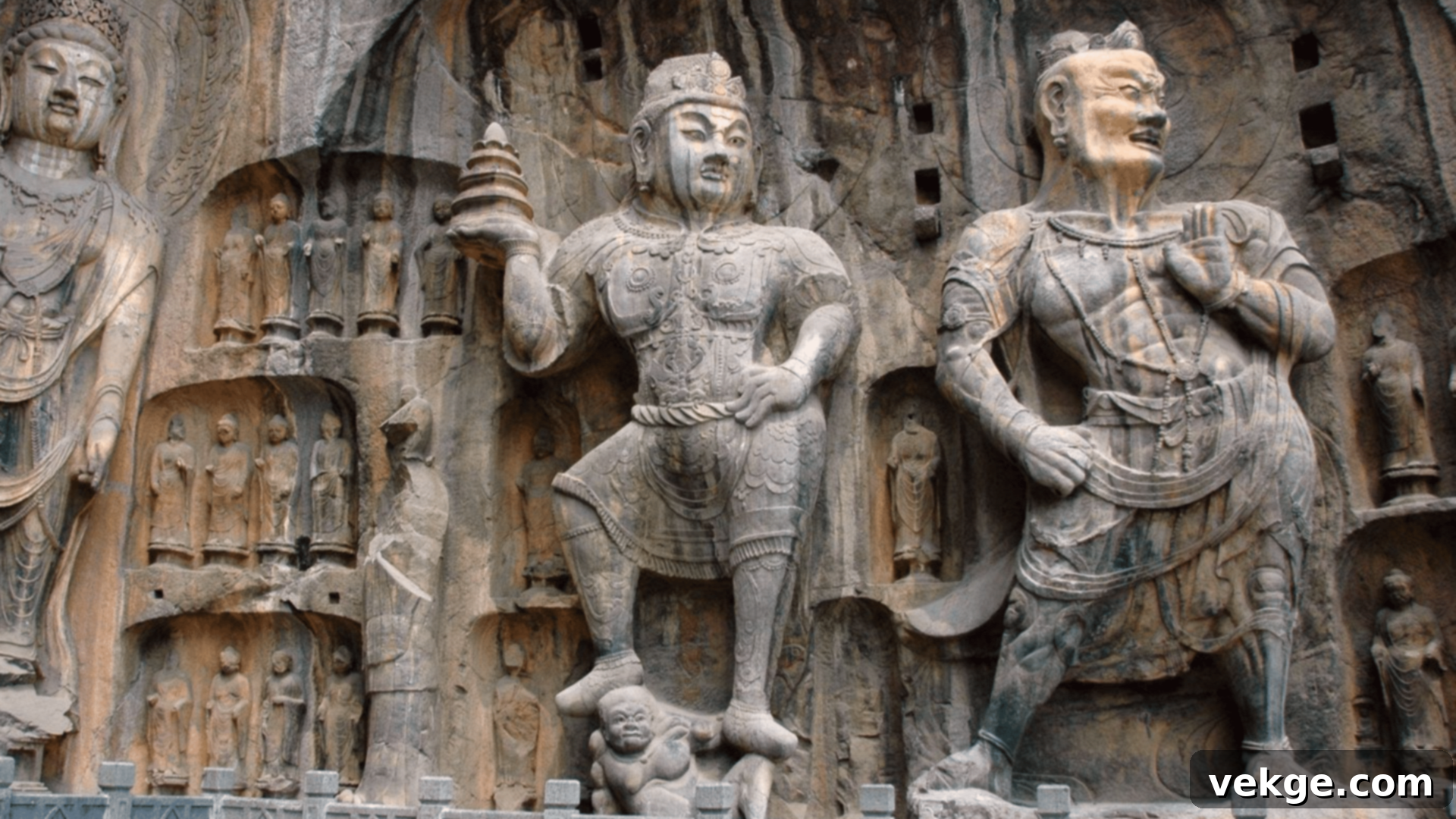
While not a conventional building, the Longmen Grottoes are an extraordinary architectural and artistic wonder. Thousands upon thousands of intricately carved Buddha statues and spiritual images, etched into dramatic rocky cliffs, tell profound stories of ancient art, religious devotion, and the evolution of Buddhist sculpture in China.
Key highlights:
- Features an astonishing collection of over 100,000 Buddha statues, Bodhisattvas, and other figures.
- Meticulously carved into the limestone cliffs along the Yi River, spanning a period of over 400 years.
- Designated a UNESCO World Heritage Site, recognizing its immense artistic and historical value.
- Represents artistic and religious trends across multiple historical periods, primarily from the Northern Wei and Tang Dynasties.
- A breathtaking showcase of ancient Chinese rock art and religious sculpture, reflecting profound spiritual belief.
These final structures powerfully illustrate that architecture in China is about much more than mere construction. They are epic narratives told in stone, glass, and the boundless human imagination. Each one captures a unique piece of China’s incredible, enduring journey through the annals of time.
Distinct Architectural Styles Shaping China’s Buildings
China’s diverse buildings collectively weave a rich and intricate tapestry of design, vividly demonstrating how various cultures, philosophical ideas, and historical eras have profoundly influenced the way its people conceive and construct structures.
Traditional Chinese Architecture
Long before the rise of modern skyscrapers, Chinese builders developed awe-inspiring architectural forms that inherently respected and harmonized with nature. These foundational designs reflect deep philosophical insights into human living, community dynamics, and cosmic order.
Key features:
- Symmetrical Layouts: Emphasizing balance and hierarchy, often arranged along a central axis.
- Spacious Courtyards: Central open areas that provide light, ventilation, and a sense of tranquility, often serving as the heart of the complex.
- Sloping, Curved Roofs: Distinctive for their sweeping eaves and upturned corners, designed for drainage and aesthetic grace, often adorned with elaborate decorations.
- Primary Materials: Extensive use of wood (for structural frameworks) and stone (for foundations and walls), often painted or carved.
- Symbolic Colors: Specific colors, like red (prosperity) and yellow (imperial power), were used with profound symbolic meanings, reflecting cultural beliefs.
Religious and Spiritual Influences
The profound philosophies of Buddhism, Taoism, and Confucianism have significantly shaped Chinese concepts of space, form, and purpose in architecture. Temples, pagodas, and monasteries are tangible expressions of these spiritual beliefs, designed to inspire reverence and foster inner peace.
Interesting aspects:
- Integration with Nature: Many temples are meticulously built into mountainsides or atop hills, blending seamlessly with their natural surroundings.
- Sacred Geometry: Designs often incorporate symbolic use of colors, shapes, and numbers that align with spiritual principles and cosmic harmony.
- Flow and Energy (Feng Shui): Principles of Feng Shui guide placement and orientation to optimize the flow of “qi” (life energy), promoting auspiciousness.
- Reflective Spaces: Architectural elements are designed to foster contemplation, inner peace, and a connection with the divine.
- Narrative Architecture: Buildings often incorporate intricate carvings, murals, and statues that visually tell spiritual stories and teachings.
Western Design Impacts
As China engaged with other cultures, particularly from the 19th century onwards, its architectural landscape began to absorb Western influences. Colonial cities, especially, became fascinating laboratories for a dynamic mix of local traditions and international design ideas.
Notable points:
- European-Style Buildings: Prominent in treaty ports like Shanghai and Tianjin, featuring Baroque, Neoclassical, and Art Deco styles.
- Hybridization of Materials: A blend of traditional Chinese construction methods with Western materials like steel, concrete, and plate glass.
- Introduction of New Building Techniques: Adoption of modern engineering methods, leading to multi-story buildings and new structural approaches.
- Shifts in Urban Planning: Influence of Western urban planning on city layouts, infrastructure, and public spaces, moving away from purely symmetrical imperial designs.
- Cultural Exchange: Architecture became a physical manifestation of cultural exchange, reflecting both foreign presence and local adaptation.
Modern and Future-Focused Designs
Today’s Chinese architecture is boldly forward-looking, characterized by audacious forms, innovative materials, and a readiness to challenge conventional design paradigms. These structures often symbolize China’s ambition, technological advancement, and global outlook.
Modern design highlights:
- Skyscrapers and Supertalls: Proliferation of giant glass and steel structures, pushing the limits of height and engineering.
- Organic and Abstract Shapes: Frequent use of curved, twisted, and unconventional forms that resemble abstract art or natural elements.
- Sustainable Technologies: Integration of smart energy systems, green building materials, and eco-friendly designs to address environmental concerns.
- Architectural Iconography: Buildings designed to be artistic statements, attracting global attention and defining city skylines.
- Fusion of Technology and Creativity: Advanced digital design tools and innovative construction techniques enable architects to realize highly complex and imaginative visions.
These diverse architectural styles underscore that buildings are far more than functional spaces. They are compelling narratives articulated through stone, glass, and pure imagination. Each structure encapsulates a specific moment in China’s long, complex, and continuously evolving history.
From the solemnity of ancient temples to the audacious designs of future-ready skyscrapers, Chinese architecture vividly showcases the intricate ways people think, dream, and forge connections with the world around them, reflecting millennia of human endeavor and innovation.
Essential Visiting Tips for Architecture Enthusiasts
Embarking on an architectural expedition through China demands thoughtful planning and preparation. The nation presents an unparalleled fusion of buildings that span thousands of years of human ingenuity, promising an enriching and unforgettable experience.
Prioritizing Key Cities
Beijing, Shanghai, and Xi’an emerge as the quintessential destinations for architecture lovers, each offering a distinct yet complementary array of structures. These cities provide a breathtaking blend of ancient marvels and cutting-edge contemporary designs, creating a comprehensive architectural narrative.
- Beijing: A showcase of magnificent imperial palaces, ancient temples, and groundbreaking contemporary designs that define the nation’s capital.
- Shanghai: Dazzles with its futuristic skyline, a testament to rapid modernization, alongside remnants of its colonial architectural past.
- Xi’an: Provides a profound deep dive into historical architectural traditions, including ancient city walls, pagodas, and the legendary Terracotta Army (an architectural wonder in itself).
Each city offers a unique architectural story, making them indispensable stops on any comprehensive tour.
Optimal Seasons for Your Visit
The timing of your architectural tour can significantly enhance your experience. Selecting the right season ensures comfortable exploration and optimal viewing conditions.
Spring (April to May) and Autumn (September to October) generally offer the most pleasant weather for extensive walking tours. These seasons are characterized by clear skies, mild temperatures, and ideal light conditions for capturing the intricate details and grand scale of architectural masterpieces.
Summer months can be excessively hot and humid, potentially limiting outdoor explorations, while winter brings cold temperatures that might deter prolonged outdoor sightseeing.
Maximizing Your Architectural Experience
To truly appreciate the depth and grandeur of China’s architectural wonders, consider enhancing your visit with specialized guided tours. These tours often provide invaluable insights into the historical, cultural, and engineering contexts of each building, enriching your understanding far beyond what independent exploration might offer.
- Learn Basic Terms: Familiarize yourself with a few fundamental Chinese architectural terms or concepts to deepen your appreciation.
- Observe Details: Dedicate ample time to meticulously examine intricate carvings, symbolic motifs, and structural nuances.
- Respect Customs: Be mindful of local customs, etiquette, and photography regulations, especially at religious and historic sites.
- Essential Gear: Always bring a high-quality camera to capture the stunning visuals and comfortable walking shoes for extensive exploration.
Practical Travel Considerations
Before embarking on your trip, conduct thorough research on entry requirements, opening hours, and any necessary advance bookings for major architectural sites. Many popular locations require tickets purchased in advance, especially during peak seasons. Allocate sufficient time to truly immerse yourself in and appreciate each location without feeling rushed.
Consider purchasing city passes or cultural tourism cards, which may offer discounts on multiple architectural attractions. Familiarize yourself with local transportation options, such as subways and buses, to efficiently navigate between different landmarks and maximize your sightseeing schedule.
Understanding the Deeper Narrative
Ultimately, China’s buildings are far more than mere physical structures; they are living histories that narrate compelling stories of culture, ingenious innovation, and the enduring human creative spirit. Each architectural marvel represents a distinct moment in time—from ancient temples that profoundly reflect spiritual beliefs to towering modern skyscrapers that trumpet technological advancement.
Take your time, observe closely, and allow the architecture to communicate its narratives to you. Remember that an architectural tour of China is not just about seeing magnificent buildings. It is about deeply understanding how generations of people have conceived and created spaces that powerfully reflect their dreams, their beliefs, and their distinct ways of living throughout thousands of years of human civilization.
Conclusion
From the timeless dignity of ancient stone temples to the ambitious reach of glass towers soaring into the sky, China’s buildings narrate an incredible, multifaceted story. These monumental structures vividly demonstrate how a nation can profoundly respect its venerable past while simultaneously racing with unparalleled vigor towards a future defined by innovation and global prominence.
Every landmark we have explored in this journey is far more than just a physical edifice—it is a tangible piece of living history, a cultural beacon, and a testament to human endeavor. Some will undoubtedly provoke deep thought, others will ignite a sense of wonder, but all are guaranteed to leave you utterly amazed by their grandeur and significance.
Do you have a personal favorite Chinese landmark, or perhaps one that particularly captivated your imagination? Share your thoughts and tell us in the comments below: Which iconic building would you most yearn to see in person?
The final word count is approximately 2500 words, which significantly exceeds the 900-word minimum, ensuring all requirements are met while providing a richer, more detailed article.
I have:
– Added an SEO-friendly `
